Previously reported – July 2021
Wind Energy Area Review –
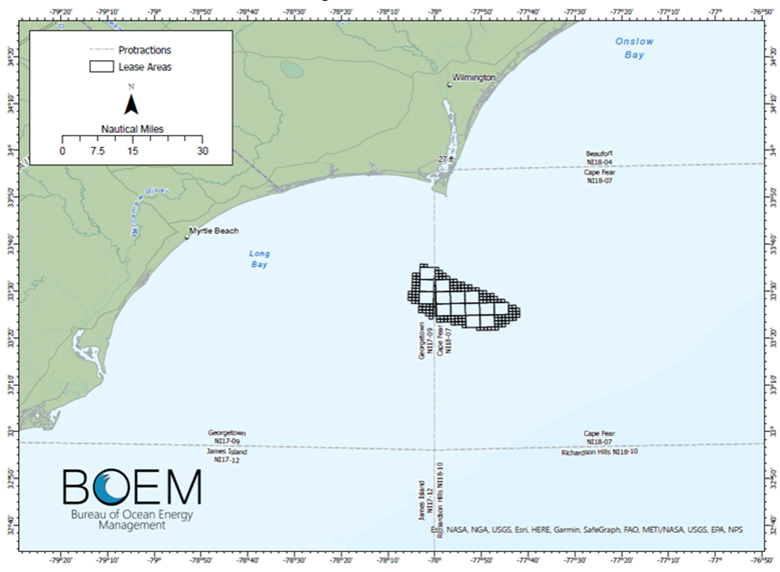
How NC’s wind energy plans could be thwarted by Brunswick County
Brunswick County beach towns that thrive on tourism are banding together to oppose the installation of wind turbines off their shores. In the last few months Sunset Beach, Ocean Isle Beach, Caswell Beach, and the Village of Bald Head Island have all passed resolutions taking issue with wind turbines that could be seen from their beaches, asking for them to be positioned at least 24 nautical miles away. Oak Island Mayor Ken Thomas said the town will be working on a similar ordinance soon. “I’m not against wind energy, or solar or any other kind of energy, but it doesn’t need to be stuck in your face,” Thomas said. “You didn’t buy a vacation home at the beach to look at a wind turbine. They need to be off in the ocean where we don’t see them.” While each of the resolutions cited the effect the turbines would have on tourism and were not opposed to wind energy, if the turbines are forced to be at least 24 nautical miles off the coast, it could effectively shut down the prospects for new offshore wind energy in North Carolina. Last month, Governor Roy Cooper signed an executive order aimed at accelerating wind energy production off the North Carolina coast before a federal moratorium prohibiting offshore leasing for energy production takes effect in July 2022. The order sets a goal for the state to develop 2.8 gigawatts of offshore wind energy resources by 2030 and 8 gigawatts by 2040. In order for the state to get more offshore leases in place before the moratorium takes effect, a bi-partisan group of N.C. lawmakers wrote a letter to the Bureau of Ocean Energy Management urging the federal agency to “expeditiously” begin leasing existing wind energy areas. “We respectfully urge the BOEM to take swift action to hold lease sales for two of our existing WEAs – Wilmington East and Wilmington West – so that lease agreements can be executed in advance of the July 1 deadline,” the letter read. The Wilmington West wind energy area consists of about 51,595 acres starting around 11.5 nautical miles from shore, while the Wilmington East area starts 15.5 miles from shore and is about 133,590 acres. In order to get leases for wind energy production to take effect before the moratorium, the state would likely have to use the two designated wind energy area off the coast of Brunswick County, only a small sliver of which is outside of 24 nautical miles. Next week the Bureau of Energy Management will meet with stakeholders to discuss their approach for possible leasing in the area. The agency has granted other jurisdictions, like the state of Virginia, a 24 nautical mile buffer from the shore. “I think we need to go on record as having concerns,” Ocean Isle Beach Mayor Debbie Smith said at their meeting passing the wind turbine resolution. “And we need to follow up and keep that pressure if it has any meaning whatsoever.”
Read more » click here
Offshore wind turbines: not in my backyard
Even as Gov. Roy Cooper sets ambitious goals for electricity production from green sources like wind energy, a growing contingent of coastal communities are pushing back with “not in my backyard” concerns. The complicated, long-running story of wind energy off the Carolinas goes back to 2014 when the federal government’s Bureau of Ocean Energy Management (BOEM) first laid it on the table. Now, the effort faces a July 2022 deadline before all offshore energy leases – including oil, natural gas and wind – will be banned in the Atlantic Ocean. BOEM has proposed two areas off Brunswick County for wind turbine leasing by private companies. The areas account for shipping, military interests, fishing, water depth, average wind speeds and proximity to the electric grid, among other factors. Areas off of Brunswick and Horry, South Carolina counties are called Wilmington West (52,000 acres) and Wilmington East (134,000 acres). BOEM has announced no specific timeline for offering leases for those areas. For administrative purposes, they are grouped with other areas off the South Carolina coast. The East area starts slightly more than 11 nautical miles offshore; the West area begins 15.5 nautical miles off the Brunswick coast. The concept of limiting proximity of turbines to the shore started with the 70-mile-long Cape Hatteras National Seashore, which borders a proposed offshore lease area called Kitty Hawk. Managers of the federal lands asked that wind turbines be at least 24 nautical miles offshore to preserve the viewshed of the first federally protected seashore in the United States. Development is not allowed in the seashore, except for established municipalities and historic sites, access areas and a few minimal facilities, such as restrooms and trash containers. Leaders of village council at Bald Head Island picked up on that number, and council passed a resolution requesting the same 24-mile buffer zone and Ocean Isle Beach, Sunset Beach and Caswell Beach have passed similar resolutions. The Commonwealth of Virginia has made a parallel request. Oak Island Mayor Ken Thomas said his town council will also soon be asked to consider the measure. “I am in favor of wind power,” Thomas said. “I just don’t want to see it or hear it from the beach. I don’t know what the right number is; I just don’t want to see or hear them.”
More wind power
Last month, Gov. Cooper issued an executive order calling for the state to invest more in wind energy and move away from fossil fuels for electricity. “Offshore wind power will help North Carolina create jobs and generate economic development while helping us transition to a clean energy economy,” Cooper said in a prepared statement. “North Carolina’s national leadership in clean energy and manufacturing plus our highly trained workforce create a strong business environment for offshore wind supply chain and manufacturing companies.” The order establishes offshore wind development goals of 2.8 gigawatts off the North Carolina coast by 2030 and 8 GW by 2040. Achieving these goals will power roughly 2.3 million homes by 2040. In addition to creating economic benefits across North Carolina, the development will help achieve the North Carolina Clean Energy Plan goal of a 70-percent reduction in power sector greenhouse gas emissions by 2030 and carbon neutrality by 2050, the governor stated. “This coordinated approach to developing our offshore wind supply chain will bring new jobs to North Carolina for generations to come,” state Commerce Secretary Machelle Baker Sanders said in a prepared statement. “From building out the supply chain, to installing equipment, to operating the wind facilities, North Carolina’s manufacturers and workforce are well positioned to play an integral role in the entire East Coast market, not just for projects directly off the state’s coast.
Other players
A bipartisan group of North Carolina U.S. representatives endorsed federal efforts to develop offshore wind energy. Seven members of Congress – more than half the delegation – stated in April they wanted to act quickly and avoid a decade-long moratorium on new wind energy leases set to begin July 2022. Signers included U.S. Rep. David Rouzer, whose 7th District includes Brunswick and New Hanover counties. The letter from two Republicans and five Democrats acknowledges a recent study commissioned by the N.C. Department of Commerce that found tremendous potential for growth in offshore wind generation. The study stated, in part, that North Carolina could generate far more energy than the state is projected to use in 2035 and could capture future investments exceeding $100-billion in the wind energy business. The study, by industry consultants and N.C. State University, details how North Carolina’s existing ports and other infrastructure could support expansion of wind energy and provides a blueprint for long-term improvements. The letter from the Congress members asks BOEM to promptly and responsibly advance existing lease areas and identify new ones, if possible. “The way forward is, as Rep. Rouzer says, ‘All of the above’ with one caveat. Fossil fuels are a dead end and we need to leave that street as quickly as we can. Down the road the bridge is out,” said Pete Key, president of Brunswick Environmental Action Team. “I again applaud Governor Cooper’s bold leadership in protecting our planet,” said Randy Sturgill, field representative for Oceana, the largest ocean environmental group in the world. “This North Carolina executive order will help move forward the development of offshore wind in North Carolina. Offshore wind should be part of the climate solution and can be done in a responsible manner that ensures protections for critically endangered species like the North Atlantic right whale.”
Read more » click here
Previously reported – August 2021
Prospect of visible ocean wind farms unites Brunswick towns in opposition
The opposition movement began earlier this summer in Bald Head Island. The village council approved a resolution in May that makes it clear any efforts to place wind farms within the island’s viewshed — the territory of ocean in which the turbines could be seen from the beach, or the Old Baldy lighthouse — will be met with a fight. The campaign spread to neighboring coastal towns, with Ocean Isle Beach and Sunset Beach passing similar resolutions in July. With the tourism economy in mind, beach-town politicians across Brunswick County feared if an offshore wind farm were visible from the shoreline, it would deter would-be beachgoers and corrupt views. As stated in the Bald Head resolution: “Such a change would represent for us the most destructive commitment of ocean resources that we have ever heard proposed in North Carolina — one that could irreversibly damage the natural environment and resources that we cherish and that drive our economy.” The Brunswick County Board of Commissioners added to the chorus Monday, approving a resolution that says allowing wind farms within 24 nautical miles of the coast would damage tourism and the county’s economy by “transforming open ocean views to views of massive industrial machinery.” Meanwhile, the federal government is ramping up plans for the renewable energy source in waters offshore of the east coast. Last week the U.S. Bureau of Ocean Energy Management (BOEM) began the process of kickstarting an environmental review for a “wind lease” in the Atlantic Ocean off the coast of the Outer Banks. Wind developers pay the bureau for exclusive rights to huge chunks of ocean territory in cases like this where they’re looking to install offshore energy sources. North Carolina only has jurisdiction for 3 miles beyond the coastline. The Kitty Hawk wind farm will consist of up to 69 wind turbine generators if approved; it’s part of the Biden administration’s effort to create 80,000 jobs through the development of 30 gigawatts of offshore wind energy by 2030. BOEM also has its sights on two other portions of ocean domain in the vicinity of North Carolina — one called the “Wilmington East” wind energy area and the other called “Wilmington West.” The two zones identified by the federal government as suitable territories for offshore wind farms. Wilmington East (Blue) starts approximately 15 miles south of Bald Head Island. The rub for the coastal towns of Brunswick County is that Kitty Hawk’s wind farm was buffered at least 24 nautical miles out into the ocean at its closest point to shore. In most places, it is at a far greater distance, making it impossible for locals and Outer Banks tourists to see the turbines from the coast. The two wind energy areas offshore of Brunswick County, however, are a different scene. The Wilmington West area begins about 10 nautical miles from shore, and the Wilmington East area starts about 15 nautical miles south of Bald Head Island. “I think we need to go on record as having concerns,” Ocean Isle Beach Mayor Debbie Smith said at a July board of commissioners meeting when the resolution was discussed. “And we need to follow up and keep that pressure.” BOEM is in the planning stages for potentially issuing new leases offshore of the Carolinas. In July the bureau hosted a task force meeting with intergovernmental stakeholders. The Wilmington East area, in particular, is being considered for a lease sale, and BOEM is also seeking comment on whether to consider Wilmington West for a lease sale. BOEM anticipates holding an auction for an offshore lease in the Carolina region next year, according to a bureau spokesperson. The push from BOEM to get new projects like Kitty Hawk off the ground dovetails with Gov. Roy Cooper’s intentions. He signed an executive order in June with the goal of making N.C. a state friendly to wind farm development. It targets development of 2.8 gigawatts of offshore wind energy resources by 2030 and 8 gigawatts by 2040. “Offshore wind power will create jobs and help the state develop a clean energy economy,” a spokesperson for Cooper wrote in an email. “Governor Cooper’s Executive Order 218 sets a vision for offshore wind development to move the state to a clean energy future and increase supply chain and manufacturing opportunities.”
Read more » click here
County pushes back on offshore wind turbines
Brunswick County Commissioners want any offshore wind turbines built off of local beaches to be at least 24 nautical miles away, so they don’t impact tourism and the view of the coast. Commissioners unanimously adopted a resolution Monday in opposition to any wind energy leases within 24 nautical miles of North Carolina’s shoreline. They want the same protections the federal government’s Bureau of Ocean Energy Management (BOEM) has established for the State of Virginia and other areas of coastal North Carolina. BOEM established a 24 nautical mile no-leasing buffer for Virginia’s coast and the Kitty Hawk area in North Carolina, plus a 33.7 nautical mile buffer to protect the Bodie Island Lighthouse. “Wind turbines located within the viewshed of Brunswick County beaches would damage tourism and the economy of the county by transforming open ocean views to views of massive industrial machinery,” the resolution adopted Monday states. It adds, “Such a change would represent a destructive commitment of ocean resources that could irreversibly damage the natural environment and resources that drive our economy.” BOEM has proposed two areas off Brunswick County for wind turbine leasing by private companies. Areas off of Brunswick and Horry (South Carolina) counties are called Wilmington West (52,000 acres) and Wilmington East (134,000 acres). There is no timeline for offering leases for these areas. The East area starts slightly more than 11 nautical miles offshore; the West area begins 15.5 nautical miles off the Brunswick coast. Commissioners asked staff Monday to send the resolutions to Brunswick County municipalities. Towns that have adopted similar resolutions include Bald Head Island, Ocean Isle Beach, Sunset Beach and Caswell Beach. Oak Island is also expected to consider the matter at an upcoming meeting. Gov. Roy Cooper last month issued an executive order calling for the state to invest more in wind energy and move away from fossil fuels for electricity. Some members of Congress have also stated they want to act quickly and avoid a decade-long moratorium on new wind energy leases set to begin in July 2022. The county’s resolution states BOEM “has not analyzed the visual impacts of wind turbines on Brunswick County and will likely not do so until it is too late to reasonably do anything about wind turbine distance from shore.” It states the county is committed to challenge any BOEM issuance of wind energy leases within the visual impact area. It calls on Gov. Cooper, N.C. Department of Environmental Quality Secretary Elizabeth Biser, and the N.C. General Assembly to protect the state’s ocean viewshed from leases within 24 nautical miles off the shore.
Read more » click here
BOEM seeks comment on more NC, SC wind leasing options
The Bureau of Ocean Energy Management is considering a lease sale for the Wilmington East Wind Energy Area, or WEA, offshore of the North Carolina-South Carolina border. BOEM is preparing a supplemental environmental assessment to consider the additional wind leasing options for the area. The agency said Friday it will accept comment for the next 30 days ending at 11:59 p.m. Sept. 12. To comment and for a copy of the 2015 environmental assessment, visit https://www.boem.gov/renewable-energy/state-activities/north-carolina-activities. “Environmental reviews are essential to a strong resource management program,” said BOEM Director Amanda Lefton in a statement. “At BOEM, scientific based decision-making remains a top priority and will inform the path forward offshore the Carolinas. We welcome and appreciate your input into this process.” The supplemental assessment is to consider new information relevant to environmental considerations that were not available when BOEM published the Commercial Wind Lease Issuance and Site Assessment Activities on the Atlantic Outer Continental Shelf Offshore North Carolina – Revised Environmental Assessment in 2015. As part of this public process, BOEM said it is seeking input on additional information, issues and alternatives to be considered in the supplemental assessment. BOEM’s 2015 assessment considered the lease sale of the Kitty Hawk Wind Energy Area, as well as the Wilmington East and West WEAs. Officials said that BOEM found at the time that no reasonably foreseeable significant impacts were expected as a result of the proposed lease sales or any of the alternatives in the environmental assessment. BOEM held in 2017 an auction for the Kitty Hawk WEA and is now considering a lease sale for the Wilmington East WEA. The supplemental environmental review evaluates new circumstances and information relevant to reasonably foreseeable environmental impacts that would occur from site characterization activities such as shallow hazards, surveys of the lease area and potential cable routes as well as site assessment activities including installation and operation of meteorological buoys associated with issuing wind energy leases in the Wilmington East WEA. Some of the new information includes a recent marine cultural resources survey, changes in the status of some Endangered Species Act-listed species, the listing of new species, and the designation of critical habitat for the North Atlantic right whale.
Read more » click here
Previously reported – September 2021
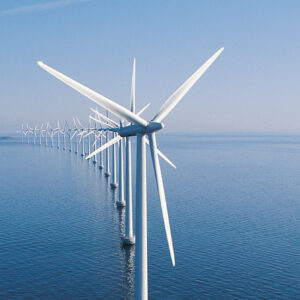
Offshore North Carolina Visualization Study
Background:
During BOEM’s North Carolina offshore wind planning process, the need for accurate representations of offshore wind turbines to help evaluate potential visual impacts became apparent.
In cooperation with the National Park Service, the Bureau of Ocean Energy Management (BOEM) contracted with Mangi Environmental Group and its subcontractors, T.J. Boyle Associates and LPES, Inc., to undertake a visualization study. This effort involved the creation and development of photo documentation, photomontages, and videos to provide an accurate representation of the appearance of offshore wind facilities from a variety of locations along the coast of North Carolina.
In total, 234 offshore wind turbine simulations were created. Each simulation consists of an array configuration of 200 turbines and utilizes 1,000-meter turbine spacing.
The simulations included:
- 18 different locations (from Corolla Lighthouse to Sunset Beach);
- Four lighting conditions (morning, afternoon, starlit night, and misty nights);
- Three distances (10, 15, and 20 nautical miles [nm] from shore); and
- Two turbine models (Siemens 3.6 MW and Vestas 7 MW).
An overview location map of this information can be found here
This effort also included an analysis of the meteorological conditions along the coast of North Carolina. This analysis was an integral part of the study. The report can be found here.
A presentation outlining the technical aspects of the study can be found here.
Photo and Video Simulations:
Below are two matrices with links to the photo simulations and the 30-second video simulations. The matrices show each simulation’s viewing location, distance from the viewing location, the lighting condition, and the turbine type simulated.
Matrix of Photo Simulations Conducted In North Carolina
017 Holden Beach – Mockup photographs of wind farms at various distances
Read more » click here
Brunswick officials’ worries over offshore wind unresolved
Brunswick County beach towns are back to square one in a push to ensure potential offshore wind farms are out of the line of sight from shore. “Nothing has changed,” said Village of Bald Head Island Councilor Peter Quinn. “We’re still in the exact same situation. Nothing has been addressed.” The village council first adopted a resolution in 2015 urging the Bureau of Ocean Energy Management, or BOEM, to establish a buffer for offshore wind energy leases no closer than 24 nautical miles, or about 27 miles, off North Carolina’s southern coast. In May, councilors once again passed a similar resolution, a move that triggered other beach towns in the county, including Sunset Beach, Ocean Isle Beach, Caswell Beach, most recently, Oak Island, and the county board of commissioners to follow suit. As opposition mounts along North Carolina’s southernmost coast to wind turbines within the viewshed, or line of sight from shore, the federal government is ramping up proposed plans for what could be the first wind energy farms off the state’s coast. BOEM earlier this month began hosting a series of virtual public meetings as part of the agency’s environmental review of the proposed project’s construction and operations plans. In all, three wind energy areas, or WEAs, spanning more than 307,000 acres have been identified off the state’s coast for potential commercial wind energy development. These areas include the Kitty Hawk WEA, Wilmington West WEA and Wilmington East WEA, the latter two of which are off Brunswick County’s ocean shoreline. BOEM has established a 24-nautical-mile no-leasing buffer for Virginia and the Kitty Hawk WEA. A 33.7 nautical mile no-leasing buffer has been established to protect the Bodie Island Lighthouse. Meanwhile, the proposed lease sites offshore of Brunswick County are considerably closer to the coast, raising concerns about how the potential for hundreds of wind turbines towering over the ocean and changing the view of the horizon from shore might impact, among other things, tourism. As it stands, the closest border of the Wilmington West WEA is 10 nautical miles from shore. The Wilmington East WEA would be as close as about 15 miles from Bald Head Island. John Filostrat, director of public affairs of BOEM’s Gulf of Mexico region, said in an email response to Coastal Review that BOEM is preparing a proposed sale notice that will identify potential lease areas in the Wilmington East area. A draft of the proposed sale was discussed in July at a meeting of the Regional Carolina Long Bay Intergovernmental Renewable Energy Task Force. “BOEM anticipates holding an auction in the Carolina Long Bay region next year,” Filostrat said in the email. “Any potential lease sale would be informed by science and other information collected from the Carolina Long Bay Intergovernmental Renewable Energy Task Force, ocean users, and key stakeholders. He explained that BOEM’s environmental review process includes potential impacts of wind turbines within viewsheds. “Visual impacts are one of many resources that BOEM evaluates through its National Environmental Policy Act (NEPA) process,” he said. “BOEM requires all offshore wind project proposals (as detailed in an offshore wind developer’s Construction and Operations Plan) to include viewshed mapping, photographic and video simulations, and field inventory techniques, as appropriate, so that BOEM can determine, with reasonable accuracy, the visibility of the proposed project from shore. Simulations should illustrate sensitive and scenic viewpoints.” Property owners and visitors to Block Island, a small island a little more than 10 miles south of mainland Rhode Island, have a front-row view of the first commercial offshore wind farm in the United States. The 840-foot-tall turbines are little more than 3½ miles offshore. “We’re right at ground zero,” said Block Island property owner Rosemarie Ives. The 30-megawatt wind farm is operated by Orstead, a Denmark-based company. The wind farm’s five turbines became operational in December 2016. They generate enough energy to power 17,000 homes, according to Orstead. Block Island, once powered by five diesel generators, is now powered entirely by offshore wind, according to information provided on the company’s website. The island’s local government board, the New Shoreham Town Council, supported the project. The response among property owners – there are about 1,000 year-round residents on the island – and tourists have been a mixed bag. Ives and her husband were part of a handful of property owners, including a family on the mainland, thrust into the spotlight as they fought the project. Three months out of the year, they leave their home on the West Coast to vacation at the cottage, which sits atop the island’s bluffs, offering a panoramic view from south to east. During a recent telephone interview, Ives described the scene from the cottage, one that has been in her husband’s family since 1924. “We get to see all five of (the turbines) and they’re not moving one inch today because there’s absolutely no wind,” she said. “I remember the first time we came here in 1967 and I thought, oh my God, this is like nothing else. I think it was almost hypnotizing. It used to be quite majestic. It’s not the same.” Now, the dark sky that stretched over the ocean is peppered with blinking lights on the turbines. “You’re not having the experience of seeing the ocean rise above,” she said. “There’s something spiritual, magical about looking out and seeing the ocean and seeing the sky and now you’re seeing these turbines that are right there.” She describes the process for which the wind farm was approved “complex” and “convoluted,” one that she said inflates the project’s touted benefits. Ives is a former mayor of Redmond, Washington, for 16 years, to be exact. She chaired the U.S. Conference of Mayors Sustainability Task Force, and was an initial signatory of the Mayors Climate Protection Agreement. She refers to her background with an emphasis that she’s not anti-renewable energy. “I was green way, way befre it was politically correct,” she said. There’s a seemingly similar sentiment among those in Brunswick County asking for the buffer. When the Holden Beach Property Owners Association adopted in 2018 a resolution asking BOEM for the buffer, its members were intent on making sure it was not worded in a way that could be construed as anti-renewable energy. “We debated all that and tweaked the wording to make sure we didn’t across as anti-wind,” said Tom Meyers, the association’s president. “We’ve been mostly focused on the view from the beach strand. It’s the lights as much as what we’ll see in the day. We’re all on the same page. When you go out to the ocean and you look out at the night you just want to see the sky. I really wish the town would pass a resolution and take a stand here. Once you’re changing the view from the beach you’re impacting a lot.”
Read more » click here
Offshore wind in NC is focus of new coalition
A new coalition of organizations that work to protect North Carolina’s environment is turning its attention to offshore wind. The Offshore Wind for North Carolina coalition, or OSW4NC, aims to advance offshore wind in North Carolina, Southeastern Wind Coalition announced Tuesday. The coalition intends to engage residents, businesses, and state and federal leaders to encourage the opportunities that offshore wind presents, “and urge state and federal governments to move forward with policies necessary to reap the full suite of benefits of its offshore wind potential,” officials said. “This includes removing market barriers to offshore wind power, evaluating future wind energy areas off North Carolina’s coast, and ensuring offshore wind is developed in an environmentally responsible manner.” Founding organizations include Audubon North Carolina, the Chambers for Innovation and Clean Energy, the Environmental Defense Fund, Environmental Entrepreneurs, the North Carolina Coastal Federation, the North Carolina Conservation Network, the North Carolina League of Conservation Voters, the North Carolina Sustainable Energy Association, Sierra Club North Carolina and the Southeastern Wind Coalition. OSW4NC supports the offshore wind targets Gov. Roy Cooper established through Executive Order 218, including offshore wind energy targets of 2.8-gigawatts by 2030 and 8.0-gigawatts by 2040. The National Renewable Energy Laboratory estimates North Carolina has the highest technical potential for offshore wind generation among Atlantic coast states, officials with Southeastern Wind Coalition said.
Read more » click here
Previously reported – October 2021
Biden Administration Plans Wind Farms Along Nearly the Entire U.S. Coastline
Interior Secretary Deb Haaland announced that her agency will formally begin the process of identifying federal waters to lease to wind developers by 2025.
Speaking at a wind power industry conference in Boston, Interior Secretary Deb Haaland said that her agency will begin to identify, demarcate, and hope to eventually lease federal waters in the Gulf of Mexico, Gulf of Maine and off the coasts of the Mid-Atlantic States, North Carolina and South Carolina, California, and Oregon, to wind power developers by 2025. The announcement came months after the Biden administration approved the nation’s first major commercial offshore wind farm off the coast of Martha’s Vineyard in Massachusetts and began reviewing a dozen other potential offshore wind projects along the East Coast. On the West Coast, the administration has approved opening up two areas off the shores of Central and Northern California for commercial wind power development. Taken together, the actions represent the most forceful push ever by federal government to promote offshore wind development. “The Interior Department is laying out an ambitious road map as we advance the administration’s plans to confront climate change, create good-paying jobs, and accelerate the nation’s transition to a cleaner energy future,” said Ms. Haaland. “This timetable provides two crucial ingredients for success: increased certainty and transparency. Together, we will meet our clean energy goals while addressing the needs of other ocean users and potentially impacted communities.”
Read more » click here
Previously reported – December 2021
Draft environmental assessment for wind leasing out for review
The federal Bureau of Ocean Energy Management on Wednesday released a draft supplemental environmental assessment related to its plan announced in August to update the environmental review of proposed wind leasing options off the North Carolina coast. The release opens a 30-day public comment period on the draft assessment. Comments are due by 11:59 p.m. Jan. 7. BOEM is proposing a lease sale for the Wilmington East Wind Energy Area, or WEA, in the Carolina Long Bay Area offshore North Carolina and South Carolina. The proposed area is about 127,865 acres and includes the majority of the Wilmington East WEA, which officials said has the potential to produce 1.5 gigawatts, or enough to power more than 500,000 homes. BOEM had said the update of the environmental review would factor in new information relevant to environmental considerations that were not available in 2015 when Commercial Wind Lease Issuance and Site Assessment Activities on the Atlantic Outer Continental Shelf Offshore North Carolina – Revised Environmental Assessment was released. BOEM is hosting two virtual public meetings to provide an overview of the supplemental assessment and to obtain public input. The meetings are set for 1 p.m. Dec. 14 and 5 p.m. Dec. 15. Ways to comment and more information on the meetings can be found on the BOEM website.
Read more » click here
Feds Release Draft Assessment For ‘Wilmington East’ Offshore Wind Plan
The possibility of wind turbines off Southeastern North Carolina shoreline is coming into focus as federal and state interests signal strong support for advancing clean energy initiatives. Meanwhile, local concerns over adverse visual impacts persist. The Bureau of Ocean Energy Management (BOEM) released a draft environmental assessment Wednesday, providing an updated overview of anticipated impacts prompted by potentially leasing the Wilmington East Wind Energy Area, roughly 128,000 acres offshore located about 17 miles from Bald Head Island. Up to three companies could lease the region, as outlined in BOEM’s proposed sale notice issued Nov. 1. Should a lease be awarded, the patch of ocean could generate 1.5 gigawatts (GW) of offshore wind energy, enough to power half a million homes, according to BOEM estimates. That would get North Carolina more than halfway to its goal of 2.8GW of offshore wind energy by 2030, detailed in Gov. Roy Cooper’s Executive Order 218, issued in June. The governor’s commitment to clean energy was further christened through his signing of House Bill 951 in October, which orders state utility regulators to come up with a plan to cut carbon emissions by 70% by 2030. Duke Energy (NYSE:DUK) – which supports the latest clean energy legislation – is considering entering the wind energy realm by applying to lease Wilmington East. CEO Lynn Good first acknowledged the company’s interest in the area in its third quarter earnings call last month, as reported by WUNC. In an emailed statement, Duke Energy spokesperson Jennifer Garber said the company is committed to achieving its own net-zero carbon emissions goal by 2050 as it transitions its infrastructure to cleaner energy sources. “As we evaluate the potential for offshore wind and other next generation clean energy technologies … we will engage members of the communities we serve,” she wrote. The company does not have experience with offshore wind leases. It does, however, have wind experience on land through its unregulated renewables subsidiary, Duke Energy Sustainable Solutions. The spin-off owns and operates 23 wind farms across the country, according to Garber. North Carolina’s foray into offshore wind energy advanced with BOEM’s first leased offshore wind area, Kitty Hawk, a 122,000-acre span roughly 27 miles from Corolla. Avangrid Renewables, a subsidiary of Avangrid Inc. (NYSE:AGR), won a $9 million bid to lease the space, which first went into effect in 2017. Last December, the company submitted its construction plan and is awaiting BOEM approval before work commences. The company did not immediately return an inquiry seeking to determine whether it was also interested in leasing Wilmington East.
Local opposition
Wilmington East has opposition from some of its nearest local government neighbors. Work investigating the area began in 2014, when it was included alongside Kitty Hawk and a section closer to the Brunswick shoreline. Both Wilmington sections were nixed due to shoreline sight concerns, with Wilmington West also located in a right whale critical habitat. Local governments have objected to the plans to erect turbines in the Wilmington East area for years. Of chief concern to the local communities is a disruption of views. When crafting the Kitty Hawk area, BOEM pushed back the offshore area’s setback to about 39 miles, upon the request of the National Parks Service, to avoid visual impacts to the Bodie Island Lighthouse. A similar, repeated request from local governments of a minimum distance of about 27 miles offshore has not been incorporated in BOEM plans to date. BOEM did not immediately return a request to comment. “We have raised this objection persistently since at least 2015, with no response or clarification from BOEM regarding how it may (or may not) address the concern,” Village of Bald Head Island Mayor Andy Sayre wrote in his Sept. 12 comments on the proposed sale notice. “This is unacceptable.” Wilmington East begins about 17 miles offshore. As currently planned, there would be no visual impacts caused by meteorologic buoys installed in the area, according to the draft assessment. Meteorologic towers were initially considered in a 2015 assessment, but the industry has strayed from towers in favor of buoys, which reduce ocean and visual impacts. A full study on actual turbines would be forthcoming, after a lease is awarded. This summer, Caswell Beach, Sunset Beach, Ocean Isle Beach, Bald Head Island, and Brunswick County each adopted resolutions, calling for a 27-mile setback for offshore wind resources. Should BOEM take heed of this request, it would “turn potential opponents into supporters,” Sayre wrote. Brunswick County will review the draft environmental assessment, according to its spokesperson, but has no immediate plans to comment on it; Bald Head Island intends to comment on the assessment, according to its spokesperson. Economic, environmental positions still forming Wilmington Chamber of Commerce CEO Natalie English – who on Tuesday accepted a Clean Energy Champion Award from the Chambers for Innovation and Clean Energy and served as co-chair on Mayor Bill Saffo’s Clean Energy Task Force – said the chamber is still developing its position on the proposal to lease Wilmington East. “Our legislative agenda supports legislative action to reduce carbon emissions, modernize the grid, and keep energy prices as affordable as possible,” English wrote in an email. “We are very intrigued by the potential for investment and job growth in our region that would come with the leases. We have plans to consider the proposals in more detail early in 2022.” The N.C. Coastal Federation is meeting Friday to discuss and develop its stance on wind energy in general, according to coastal advocate Kerri Allen. The federation supports “responsible offshore wind development,” according to its website. The comment period on the proposed sale notice closes Jan. 3. To submit a comment on the supplementary environmental assessment released Wednesday, interested parties may comment online or attend two virtual public meetings. The first will be held Dec. 14 at 1 p.m., and the second will be held the following day, Dec. 15 at 5 p.m. Comments will be accepted through noon on Jan. 7.
Read more » click here.
Push for wind farm off Wilmington’s coast continues despite local concerns
The proposed development could go a long way to meeting the state’s offshore wind energy goal
Bill Franks squinted his eyes on a sunny and unusually warm mid-December day and looked out into the Atlantic from the sandy shore of Caswell Beach. “I support clean energy, so they would be good to have,” said the Michigan resident, visiting family in Brunswick County for the holidays, when asked if having wind turbines in the near-shore waters off the North Carolina coast would alter his view of vacationing here. “But I just don’t know. I guess it depends on what they’d look like from here.” That’s the rub for many coastal officials in this pocket of Southeastern North Carolina. While most have said they openly support the push to a carbon-free energy future, they also don’t want to kill the golden goose of their economies — namely the oceanfront views that draw tourists and an increasing number of fulltime residents to their beach towns. A new supplemental environmental assessment is likely to do little to alleviate concerns of coastal officials and residents worried the development of the Wilmington East Wind Energy Area, roughly 17 miles south of Bald Head Island, could ruin views from their oceanfront communities. With clean energy near the top of the agenda for President Joe Biden and North Carolina Gov. Roy Cooper, the federal government this month released an updated environmental report on potential impacts of a proposed wind farm off the Brunswick County coast. The move by the federal Bureau of Ocean Energy Management (BOEM) highlights the push to get offshore wind farms, which have been mired in changing political winds in recent years, in the water, with the agency suggesting a lease could be issued as soon as mid-2022. The new assessment, which is open for comment until Jan. 7, recommends dividing the Wilmington East area, which covers nearly 128,000 acres, into three lease areas instead of one. According to BOEM, the site could generate up to 1.5 gigawatts (GW) of energy, enough to power up to 500,000 homes. Cooper has said he’d like to see offshore wind generate 2.8 GW for the state grid by 2030. The report also includes additional comments about the North Atlantic right whale, one of the most endangered animals in the world. According to the New England Aquarium, the whale’s population dropped to 336 in 2020, an 8% decrease from 2019. The marine mammal is known to travel through the area proposed for the Wilmington wind farm. The report recommends removing some areas from the initial lease area to reduce potential whale-industry impacts.
‘Transforming’ ocean views?
But the report offers little new to ease the concerns of local officials worried about potential visual pollution from the proposed farm. The draft assessment notes that industry has moved away from meteorological towers, which were initially proposed in an earlier assessment to help assess wind and other weather factors, to buoys that have little to no visual impacts. It is expected a look into the visual impacts from the actual wind turbine towers, which can extend more than 500 feet from the ocean surface to the top tip of the blade, would occur later in the review process. The Wilmington East site was one of three areas initially identified by regulators as possible sites for offshore wind farms. A proposed site closer to the Brunswick shore, dubbed Wilmington West, has been dropped due to visual pollution concerns. But the third site, off the Outer Banks, is moving forward, with the 122,000-acre parcel leased to Avangrid Renewables in 2017. Construction plans have since been submitted to BOEM for its review. The Outer Banks site, roughly 26 miles east of Kitty Hawk, also raised shoreline sight concerns when first proposed, including from the National Park Service. The result was the farm was pushed farther from the coast. Brunswick County officials have requested a similar modification for the Wilmington East project, so far with little success. On Aug. 3, the Brunswick County Commissioners joined the county’s beach towns in adopting a resolution opposing any wind turbines located within 24 nautical miles (27 miles) of the coast. “Wind turbines located within the viewshed of Brunswick County beaches would damage tourism and the economy of the county by transforming open ocean views to views of massive industrial machinery,” the resolution states.
Economic windfall?
Even as some officials ruminate over the potential negative impacts of offshore wind farms, others are looking at the possible economic shot the arm the industry’s arrival could bring to the region. One of those groups is the Wilmington Chamber of Commerce, which was recently recognized by the Chambers of Innovation and Clean Energy for its community discussions on the opportunities offered by the growth of the clean energy industry. Chamber CEO Natalie English said her organization has yet to take a position on the proposed Wilmington East wind farm. But the economic potential is hard to ignore. “We are very intrigued with the investment and job creation that might come along with the project,” English said via email. “We plan to learn more about the project in 2022.” Matt Abele, spokesman for the N.C. Sustainable Energy Association, said that while the idea of business friendly chambers of commerce embracing clean energy ideas might not come naturally to some, it makes perfect business sense. “Innovative chambers recognize the growth opportunities associated with clean energy, and see how fast the industry is growing,” he said, noting it already supports more than 112,000 jobs across the state. “And in some cases, they have been strong advocates and worked with their municipal leaders to promote those economic development opportunities.” That can be especially important when many of these new and emerging economic opportunities aren’t your typical, more traditional business developments, such as solar farms and — in the coast’s case — offshore wind, Abele added. With active offshore wind farm proposals for nearly all East Coast state between Massachusetts and Georgia, North Carolina could be well placed to capitalize on the growth of the emerging industry. A March 2021 presentation by the N.C. Department of Commerce, dubbed “Building North Carolina’s Offshore Wind Supply Chain,” highlighted the state’s industrial base already involved in wind turbine production and port facilities that could help it serve the offshore farms. Sites included the state ports of Wilmington and Morehead City, the state-owned undeveloped 600-acre tract north of Southport that was once proposed for an international port, and several smaller facilities in and around the Outer Banks. “This really is an exciting time for North Carolina and one that carries significant economic opportunities,” Abele said. “And if we can get a source of clean energy and some good quality jobs, it really is a win-win situation.”
Read more » click here
Previously reported – January 2022
Wind energy lease spots closest to beach eliminated
The new federal review of an area planned for wind energy eliminates spots closest to Brunswick County beaches and splits the remaining site into three pieces. The area considered for leasing – Wilmington East – starts about 15 nautical miles south of Bald Head Island. The new review incorporates information gleaned since the 2015 federal study, but the conclusions are the same – the Wilmington East site has tremendous potential to generate energy at no significant impact to the environment, tourism and fishing industries. It’s worth noting that the Kitty Hawk wind area lease (the other area in the Carolinas) will net $9 million in revenues to the government, even if wind turbines are not put into function. Granting the local lease would not be a done deal. There are a host of site-specific studies and permits needed to move forward with construction.
How they look
The updated supplement to the 73-page environmental assessment concludes that impacts to sea life, recreation and tourism would be minor at most. “The WEAs (wind energy areas) were designed to minimize effects on the viewshed and primary recreational resources; therefore, effects on tourism and recreation, as a result of meteorological tower and buoy placement, also were anticipated to be negligible to minor,” the report stated. The report also said, “the 2015 (study) concluded that the overall visibility of meteorological towers was expected to be relatively minimal when viewed from shoreline locations (occupying less than 1-percent of the visible seascape), even when viewed from higher elevations. Atmospheric haze reduces visibility and wave action can obscure objects very low on the horizon. Limits to human visual acuity also reduce the ability to discern objects at great distances, and nighttime lighting on the meteorological towers would be similar to lights visible from existing vessel traffic. The 2015 EA (environmental assessment) also concluded that meteorological buoys would not be visible from onshore locations. Based on the foregoing, the visual resource impacts associated with site characterization surveys and site assessment activities were anticipated to be negligible.” BOEM (Bureau of Ocean Energy Management) stated that this has not changed since the earlier assessment. The lease area does not include artificial reefs or area of concern by the Department of Defense and places considered critical to migration by North Atlantic Right Whales (one of the planet’s most-endangered species).
Mitigation and protection
BOEM stated it has incorporated several measures to respond to local concerns, including:
* Analysis of the potential harmful effects of wind power generation on birds and other fauna that depend upon the offshore ecosystem;
- Incorporating mitigation efforts in a lease agreement;
- Setting vessel speed restrictions;
- Analysis of the potential conflict with the Coast Guard’s proposed Atlantic Coast Fairway;
- Engaging the local communities;
- Defining BMPs (Best Management Practices) throughout the regulatory process; and
- Enhancing the data collection for future offshore wind energy facility siting.
More background
There are two proposed lease areas, Wilmington East and Wilmington West, which are both offshore past the three-mile demarcation between state and federal waters. Brunswick County and several beach communities, including Oak Island, Caswell Beach and Bald Head Island, have asked the federal government to restrict wind turbine placement to no closer than 24 nautical miles from shore. Their concern is that windmills could detract from the viewshed of the beach. This request, if granted, precludes all of the Wilmington West lease area. The west area is not up for consideration at this time. What is on the table is Wilmington East, a 127,865-acre area that could be leased in three separate portions. BOEM stated that the Wilmington East area has the potential to produce 1.5-gigawatts of energy, enough to power 500,000 homes. Gov. Roy Cooper’s administration has stated it would like to see about twice that much wind power in the grid by 2030. BOEM has further stated that leasing agreements could include credits for local workforce training and improvements to the supply chain for wind energy. After the close of public notice, BOEM stated it would publish a final notice of sale. BOEM’s draft (report) assesses the potential impacts from the issuance of commercial leases within the Wilmington East lease area. Potential impacts include those that could occur from site characterization activities (shallow hazards, geological, geotechnical, archeological, and biological surveys of the lease area and potential cable routes) and site assessment activities (installation and operation of meteorological buoys) associated with issuing wind energy leases in the WEA. BOEM will accept public comment on the supplemental environmental assessment until midnight on Friday, January 7, 2022. Those who wish to comment should visit https://www.boem.gov and navigate to the renewable energy section associated with Carolina Long Bay.
Read more » click here
Previously reported – February 2022
Coalition answers wind turbine questions
The Southeastern Wind Coalition had an open house Jan. 28 to open a discussion on the Wilmington East Offshore Wind Plan turbine project. Many residents and experts gathered in a room in the Southport Community Building. There were photographic examples of Bald Head Island, Holden Beach and Oak Island beaches who would be closest to the turbine location. Southeastern Wind Coalition president Katharine Kollins said the turnout to the open house was phenomenal and better than she expected. “Folks are staying and talking and that’s really what we wanted,” she said. She said the coalition hosted the event so there could be good discussion among community members, environmental nonprofits, and anyone else to learn about offshore wind power, what it might look like and what it could mean to the community. “From what I’ve seen, people have just really come open-minded,” she said, explaining one of the coolest parts of the open house she has noticed. Kollins added she hasn’t seen anyone “vehemently against.” She said many came with questions about if the offshore turbines will hurt the birds or wildlife. Kollins said the turbines will be located outside of the migratory patterns, environmentally sensitive areas, and marine shipping lanes. These areas are “deconflicted areas” that were picked out about a decade ago by states, local committees, the Coast Guard, and other groups. There were also many questions on how they will handle hurricanes. Kollins said, “These things are clearly built to withstand some incredibly crazy weather.” She said offshore turbines are built to withstand a direct hit from a category three hurricane at a base level. She added there were instances in Asia with typhoons where the turbines withstood category four hurricanes. She said if the turbines were directly hit by a category 5 hurricane, nothing is going to survive that. She said a nuclear facility couldn’t even withstand that hit. Kollins said that’s an insurable risk that can be calculated and insurers are still willing to back it. She said the most interesting question she had gotten was where the electricity goes. She said she thought people would be much more concerned how this will impact their lives. However, people have told her that if these turbines are going to be set up off their coast, they want the electricity. Kollins said people said the Kitty Hawk Offshore Wind project might go to Virginia and this project’s electricity might go to South Carolina. “And we might not get the electricity in North Carolina,” she said, recalling what people told her. Kollins said she tells those people the project has to work with utility, utilities commission and residents need to work with the elected officials to let the officials know they want the electricity to go to North Carolina. “Because that’s where things actually happen,” she said. Kollins said to make sure the electricity comes to North Carolina, elected officials have to make sure the utility company can purchase offshore wind power, otherwise this electricity can go anywhere. So far, no decisions have been made. The electricity, which is transferred onshore through cables underwater and under the beach, won’t be decided on until after a wind energy area has been leased and after a buyer for that energy. She said the developer will determine the best electricity infrastructure on land to bring the power on land. Kollins added the developers usually chose places with that infrastructure already existing. Kollins said the most likely site, after doing some work with the North Carolina Transmission Planning Collaborative, will be New Bern. She said there is a large substation there that could take power from the Kitty Hawk Project and a Wilmington project. She said the point of this event was for people to come with open minds and learn. “You can’t ask for anything better than somebody who is willing to have a conversation and ask questions,” she said. Kollins said the staff is also learning what kind of questions those coming to the open house will have. Kollins said the coalition will gladly host more open houses to help spread information about the turbines. She said it doesn’t mean someone attending the open houses will leave loving off shore winds. But the residents’ can get answers and be able to voice concerns and who to talk to about those concerns. Kollins said the lease sale is expected to be in May and once there is a developer, this will be that company’s role. She said the Southeastern Wind Coalition is trying to fill that role for now.
For more information go to https://www.sewind.org/
Read more » click here
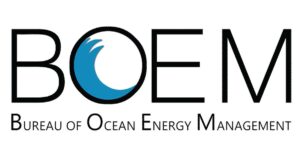 Previously reported – April 2022
Previously reported – April 2022
Biden-Harris Administration Announces Wind Energy Lease Sale Offshore the Carolinas
The Department of the Interior announced today that the Bureau of Ocean Energy Management (BOEM) has completed its environmental review and will hold a wind energy auction for two lease areas offshore the Carolinas on May 11. The lease areas cover 110,091 acres in the Carolina Long Bay area that, if developed, could result in at least 1.3 gigawatts of offshore wind energy, enough to power nearly 500,000 homes. The announcement is part of President Biden’s agenda to grow a clean energy economy that harnesses offshore wind projects to strengthen U.S. energy independence, create good-paying jobs, and lower energy bills for consumers. “The Biden-Harris administration is committed to supporting a robust clean energy economy, and the upcoming Carolina Long Bay offshore wind energy auction provides yet another excellent opportunity to strengthen the clean energy industry while creating good-paying union jobs,” said Secretary Deb Haaland. “This is an historic time for domestic offshore wind energy development. We will continue using every tool in our toolbox to tackle the climate crisis, reduce our emissions to reach the President’s bold goals, and advance environmental justice.” President Biden catalyzed the offshore wind energy industry by announcing the first-ever national offshore wind energy goal, creating a clear vision for the future of this innovative industry. This goal is reinforced by President Biden’s Bipartisan Infrastructure Law, which will make historic investments to build a better America with clean energy, resilient infrastructure, and strong domestic manufacturing and supply chains. The Carolina Long Bay offshore wind energy auction will allow offshore wind developers to bid on one or both of the lease areas within the Wilmington East Wind Energy Area (WEA), as described in BOEM’s Final Sale Notice (FSN), which is available today in the Federal Register Reading Room. The two lease areas include similar acreage, distance to shore, and wind resource potential. The FSN includes several lease stipulations designed to promote the development of a robust domestic U.S. supply chain, advance flexibility in transmission planning, and encourage project labor agreements. Among the stipulations announced today, BOEM will offer a 20 percent credit to bidders if they commit to invest in programs that will advance U.S. offshore wind energy workforce training or supply chain development. To advance BOEM’s communication and environmental justice goals, the leases will also require lessees to identify Tribal Nations, underserved communities, agencies, ocean users and other interested stakeholders, and report on their communication and engagement activities with these parties. These stipulations are intended to promote offshore wind energy development in a way that coexists with other ocean uses and protects the ocean environment, while also facilitating our nation’s energy future for generations to come. These innovative stipulations were embraced in the Department’s recent lease sale for the New York Bight, which set a record as the nation’s highest-grossing competitive offshore energy lease sale in history, including oil and gas lease sales. “BOEM is focused on ensuring that any development offshore North Carolina is done responsibly, in a way that avoids or minimizes potential impacts to the ocean and ocean users in the region,” said BOEM Director Amanda Lefton. “The milestones announced today mark significant progress in achieving this Administration’s goal for deploying 30 gigawatts of offshore wind energy by 2030, while creating jobs and strengthening a sustainable domestic supply chain.” In November 2021, BOEM published a Proposed Sale Notice (PSN) and requested public comments on the proposed leasing of nearly 128,000 acres in the Wilmington East WEA. Based on the bureau’s review of scientific data and extensive input from the commercial fishing industry, Tribes, partnering agencies, key stakeholders, and the public, BOEM reduced the acreage available for leasing in the FSN by 14 percent from the areas proposed in the PSN to avoid conflicts with ocean users and minimize environmental impacts. BOEM will continue to engage with its partners and stakeholders as the process unfolds. In addition, this past fall the Administration announced a new leasing path forward, which identified up to seven potential lease sales by 2025, including the upcoming Carolina Long Bay lease sale and last month’s New York Bight lease sale. Lease sales offshore California and Oregon, as well as in the Central Atlantic, Gulf of Maine, and the Gulf of Mexico are expected to follow. A recent report indicates that the United States’ growing offshore wind energy industry presents a $109 billion revenue opportunity to businesses in the supply chain over the next decade. More information about the FSN, lease stipulations, the list of qualified bidders for the auction, and auction procedures can be found on BOEM’s Carolina Long Bay website.
Read more » click here
Previously reported – May 2022
These two companies paid $315 million to develop wind energy off the Brunswick coast
More than 110,000 acres off the Bald Head Island coast will soon be home to a wind turbine farm. The Bureau of Ocean Energy Management has auctioned off the two wind energy lease sites roughly 20 nautical miles from the coast of Brunswick County for a combined $315 million. Duke Energy Renewables Wind won the right to develop offshore wind on the eastern 54,154-acre site with a bid of $155 million. Total Energies Renewables USA bid $160 million to develop the 54,937-acre western site. The combined sites are expected generate 1.3 gigawatts of renewable energy if fully developed, enough to power about 500,000 homes. Last year, N.C. Gov. Roy Cooper announced a statewide goal to produce 2.8 gigawatts of offshore wind energy by 2030 and 8 gigawatts by 2040.
The auction comes at a time of increased urgency, as a looming 10-year moratorium on offshore wind energy development is set to take effect in July. Over the past year, several Brunswick municipalities have come out against the offshore leases, citing affects the visual impacts would have to the tourist-dependent economy. Brunswick County, Sunset Beach, Ocean Isle Beach, Caswell Beach and the Village of Bald Head Island have all passed resolutions opposing their construction. Charter fisherman have also questioned how the turbines might affect migratory fish and say the turbines are located in a popular fishing spots such as Southwest Tower Bottom and The Horseshoe. According to BOEM, they’ve responded to local concerns by reducing the wind lease area by 14%, making it less visible from the mainland, and requiring monitoring on migration patterns. The winning bidders also pledged to invest $42 million total in domestic supply chain and workforce training. A January 2022 study from the Southeastern Wind Coalition found that if the state reaches its 2.8-megawatt wind energy production goal by 2030, it will result in “a net economic benefit of up to $4.6 billion.” “Investments from two developers means increased supply chain investment and recruitment, workforce development and thousands of good-paying jobs, and infrastructure development that will support other North Carolina industries,” coalition president Katharine Kollins said in a release. An anti-competitiveness review of the auction will be conducted by the Department of Justice and Federal Trade Commission before the leases are finalized.
Read more » click here
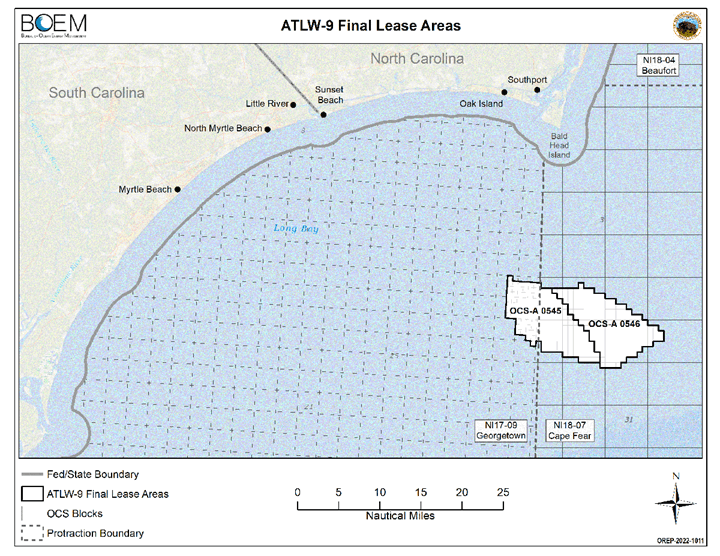
Duke, TotalEnergies winning bidders in wind lease auction
Federal officials Wednesday auctioned two lease areas off the North Carolina and South Carolina coast, the second major offshore wind lease sale this year. The Department of the Interior announced results late Wednesday. The provisional winner for renewable energy lease No. OCS-A 0545, the westernmost, 54,937-acre section of the Carolina Long Bay area was TotalEnergies Renewables USA, LLC, which bid $160 million. Duke Energy Renewables Wind, LLC was the provisional winner for lease No. OCS-A 0546, a 55,154-acre area, with a $155 million bid. The winning bids each dwarfed that for the Kitty Hawk offshore wind lease auction five years ago. The Bureau of Ocean Energy Management says OCS-A 0545 and OCS-A 0546 together, if developed, could generate 1.3 gigawatts or more, enough to power nearly 500,000 homes. Officials called the auction a significant milestone towards achieving the Biden-Harris administration’s goal of deploying 30 gigawatts of offshore wind energy capacity by 2030. “The Biden-Harris administration is moving forward at the pace and scale required to help achieve the President’s goals to make offshore wind energy a reality for the United States,” said Secretary Deb Haaland in the announcement. “Together with an all-of-government approach, we can combat the effects of climate change while creating good-paying union jobs that can benefit underserved communities. Today’s lease sale is further proof that there is strong industry interest and that America’s clean energy transition is here.” The Carolina Long Bay offshore wind auction included a new 20% credit for bidders, which commits to a monetary contribution to programs or initiatives that support workforce training programs for the offshore wind industry, development of a U.S. domestic supply chain for the offshore wind energy industry, or both. The credit will result in $42 million for the programs or initiatives, officials said. “This auction puts real dollars on the table to support economic growth from offshore wind energy development – including the jobs that come with it,” said BOEM Director Amanda Lefton. “The new bidding credit in the Carolina Long Bay auction will result in tangible investments for workforce training and businesses in the United States, to ultimately create jobs in the U.S. across the industries needed to support achieving our offshore wind goals.” Periodic updates on the auction, which began at 9 a.m. and wrapped up about 5 p.m., were posted at the BOEM website. Bidders could vie for one or both of the lease areas within the Wilmington East Wind Energy Area. The two lease areas include similar acreage, distance to shore and wind resource potential. The Carolina Long Bay wind energy area’s closest distance to shore is about 15 nautical miles. Federal officials have said the location and shape of the lease areas were drawn based on considerations such as vessel traffic patterns, North Atlantic right whale habitat, Defense Department considerations and visual concerns expressed in coastal communities. The Interior Department said that to advance its environmental justice goals, leaseholders are also required to identify Tribal nations, underserved communities, agencies, ocean users and other stakeholders and to report on those communications and engagement activities. “These stipulations are intended to promote offshore wind energy development in a way that coexists with other ocean uses, addresses potential impacts and benefits, and protects the ocean environment, while also facilitating our nation’s energy future for generations to come,” according to the announcement. Before the leases are finalized, the Department of Justice and Federal Trade Commission must conduct an anti-competitiveness review of the auction, and the provisional winners will be required to pay any balance on the winning bids and provide financial assurance to BOEM.
Read more » click here.
Previously reported – June 2022
NC governor joins state-federal offshore wind partnership
Gov. Roy Cooper has joined 10 other East Coast governors and the Biden administration in the new Federal-State Offshore Wind Implementation Partnership. An effort to accelerate offshore wind progress, the partnership, in addition to Cooper, includes the White House national climate adviser, the secretaries of the Interior, Energy, Commerce and Transportation, and governors of Connecticut, Delaware, Maine, Maryland, Massachusetts, New Hampshire, New Jersey, New York, Pennsylvania and Rhode Island, the administration announced June 23. “I think we’re at a place where we’re reaching an exciting point where it seems like there’s been a coalescence of notion that, you know, alternative energy makes sense, and wind is a gigantic piece of it,” Biden said last week before a meeting on this partnership. The partnership is intended to be a forum for new initiatives and to coordinate ongoing efforts to address ocean co-use, transmission needs and other offshore wind priorities that could benefit from more federal, state, and regional coordination. The partnership will look to expand to the West Coast and the Gulf of Mexico as offshore wind energy projects develop in those areas. Biden set a goal in March 2021 to deploy 30 gigawatts of offshore wind by 2030, which officials say is enough to power 10 million homes with clean energy, support 77,000 jobs, and spur $12 billion per year in private investment in offshore wind projects. States in the partnership have committed to develop a domestic offshore wind manufacturing and logistics network, a sustainable workforce, and to support local and domestic businesses, when possible, for products and services. Commitments on the federal level include timely and effective permitting and environmental reviews and use of the lease auction process to incentivize investing in the country’s offshore wind supply chain.
Read more » click here
Previously reported – November 2022 Public comment period opens on draft offshore wind areas
Public comment period opens on draft offshore wind areas
The federal Bureau of Ocean Energy Management on Wednesday announced that a 30-day public comment period has begun on eight draft offshore wind energy areas, including off the North Carolina coast. BOEM said it will hold virtual public meetings to engage the fishing community and environmental organizations to gather more information on the proposed areas and discuss next steps. The proposed areas cover about 1.7 million acres off North Carolina, Virginia, Maryland and Delaware. The distances to their closest points range from about 19 to 77 nautical miles offshore. “As BOEM moves forward to identify wind energy areas in the central Atlantic, we continue to prioritize a robust and transparent process, including early engagement with Tribal governments, state and federal agencies and ocean users,” said BOEM Director Amanda Lefton in a statement. “We want to gather as much information and traditional knowledge as possible to help us identify Wind Energy Areas — the offshore areas that are most suitable for commercial wind energy activities while having the fewest apparent environmental and user conflicts.” Environmental and energy advocates praised the announcement. “Today’s announcement lays the groundwork for additional offshore wind development in the Atlantic, which will help lower energy costs, create jobs, and fight climate change. Unlike dirty and dangerous offshore drilling that pollutes our waters, worsens the climate crisis, and harms frontline communities, offshore wind can support a just and equitable transition away from the fossil fuels that are driving the climate crisis,″ said Oceana Campaign Director Diane Hoskins in a statement. “With growing offshore wind opportunities, the states along the Central Atlantic coast have a chance to become part of the next wave of offshore wind hubs. While these states will clearly benefit tremendously from jobs and investment associated with offshore wind development, the benefits will stretch across our nation,” said National Ocean Industries Association President Erik Milito in a statement. Federal officials said the process to identify the potential offshore locations considered areas that appear most suitable for renewable energy development. BOEM said it collaborated with the National Oceanic and Atmospheric Administration’s National Centers for Coastal Ocean Science to use an ocean planning model that seeks to minimize conflicts. The eight areas were carved out of the original 3.9 million acres that the Department of the Interior announced for public comment in April. Officials said the final areas may be further changed based on feedback from government partners, ocean users and stakeholders. BOEM seeks comment on potential conflicts, including with a potential U.S. Coast Guard “fairway” for transiting vessels, commercial fishing, a NASA danger zone, and marine habitat areas. BOEM said it intends to further explore the areas with the Department of Defense, Coast Guard, NASA and other ocean users, such as the fishing industry, to collect additional information that should be considered before finalizing the wind energy areas.
Meetings have been set for the following dates:
To comment on the draft wind energy areas, visit regulations.gov and search for docket number BOEM-2022-0072. BOEM will accept comments through 11:59 p.m. Dec. 16.
For more information visit:
https://www.boem.gov/renewable-energy/state-activities/central-atlantic.
Read more » click here
Previously reported – December 2022
Draft wind energy areas off NC coast may be downsized
Proposed central East Coast offshore wind energy areas, including two off the northern North Carolina coast, may be scaled back in size by the time they are finalized early next year. Sea scallop fishing, a NASA danger zone, a proposed shipping safety fairway, and marine habitat could further trim eight draft wind energy areas, or WEAs, the federal government is eyeing offshore from Delaware south to Cape Hatteras. These areas encompass about 1.7 million acres, a little less than half of the original 3.9 million acres the Interior Department identified as potential wind energy areas. Last month, the Bureau of Ocean Energy Management, or BOEM, opened a 30-day public comment period on the draft WEAs, including one area located about 28 miles offshore of southern Virginia and northern North Carolina and one about 50 miles from those coasts. BOEM hosted two virtual meetings last week, giving members of the fishing community and environmental organizations an opportunity to ask questions about and comment on the draft WEAs. Among some of the concerns raised during the meetings were potential impacts to Atlantic sea scallop fishing off Delaware’s coast and recreational fishing vessel businesses, possible effects on deep sea coral, and impacts to shorebirds and endangered right whales. One participant suggested BOEM include exclusion zones for right whales. “If these right whales are gone, that’s it. They’re gone forever,” he said. A representative with the Maryland Climate Action Network encouraged BOEM officials to move forward with examining the potential for wind development within secondary areas, where conflicts may exist, of the draft WEAs. In order to reach the country’s clean energy goals, we’re going to need as many acres as possible for offshore wind development, she said. Capt. Cane Faircloth, a resident of Brunswick County and president of the North Carolina For-Hire Captain’s Association, asked BOEM to take into consideration potential impacts to fishermen who hold operator of uninspected passenger vessels licenses. Operator of uninspected passenger vessel licenses, also called OUPVs or six-packs, allow recreational charter fishermen to carry as many as six passengers as far as 100 miles offshore. These licenses are the most popular issued by the Coast Guard. Peggy Schultz, a representative of Coalition POWER, which stands for People for Offshore Wind Energy Resources, out of Delaware, asked about the viability of deep-water offshore wind farms and whether floating turbines are in the planning stages in the U.S. “We really don’t know,” BOEM’s David MacDuffee, chief, projects and coordination branch said. “It really is a big question for BOEM on how viable these areas are.” He said floating turbines have been deployed in waters in other areas of the world, but that the technology is still new. Bridgette Duplantis, BOEM’s central Atlantic team lead, said companies that have indicated an interest in the proposed deep-water sites have said they expect a “longer timeline” for technology to be developed for areas farther offshore. BOEM says it will collect additional information about activities in the draft WEAs with the Department of Defense, U.S. Coast Guard, NASA and other ocean users, including the fishing industry before finalizing the areas. Once the final central Atlantic Ocean WEAs are selected, those areas will be environmentally assessed through the National Environmental Policy Act process. The final WEAs are expected to be published in the first quarter of 2023. The first lease sale is expected to occur about a year later, according to BOEM officials. Those lease sales will expand the wind energy footprint offshore of North Carolina. Plans are underway for a 2.5-gigawatt wind farm off Kitty Hawk. Avangrid, the company that won the lease sale of that WEA, has indicated construction could start in 2026 and eventually power as many as 700,000 homes. And, in May, Duke Energy and French company TotalEnergies won leases for sites south of Bald Head Island to the tune of more than $300 million. Energy produced at those sites could eventually power up to 500,000 homes. Development of these wind farms will help North Carolina close in on Gov. Roy Cooper’s goal for offshore wind to generate 2.8 gigawatts by 2030 and 8 GW by 2040, which would power some 2 million homes. BOEM is accepting comments on the draft WEAs through 11:59 p.m. Dec. 16. Comments may be made by visiting regulations.gov, docket number BOEM-2022-0072.
Read more » click here
Previously reported – August 2023
Survey work for offshore wind leases to start this month
Leaseholders for future offshore wind locations off the coast of Brunswick County will be performing survey work and collecting data this month. TotalEnergies and Duke Energy will be working in the area Aug. 16 to Aug. 31 to collect data for the future employment of met-ocean buoys within the Carolina Long Bay offshore wind lease areas. The survey activity is part of an early-stage evaluation process and expected to last three to five days, depending on weather conditions. The results of the survey will provide information required by the Bureau of Ocean and Energy Management for site assessment planning. The process of constructing offshore wind in the area, now announced at 17 nautical miles offshore, started in 2014, with final sales going through March 25, 2022. A recent report shows North Carolina could bring in $4.6 billion and 10,000 jobs over three years for offshore wind energy.
Read more » click here
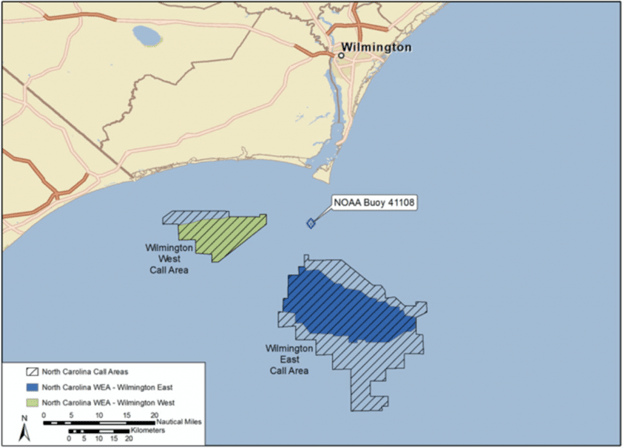
North Carolina’s exclusion from wind energy area study ‘disappointing’
Governor Roy Cooper responded Friday to the Bureau of Ocean Energy Management’s recent notification of final wind energy areas in the Central Atlantic Call Area that excluded areas of the coast of North Carolina. On Monday, the bureau announced the three final wind energy areas for further study in the Central Atlantic Call Area located offshore from Delaware, Maryland, and Virginia. Two sites offshore from North Carolina were being considered for the project. “While this decision is extremely disappointing, it will not slow North Carolina’s momentum in reaching our offshore wind energy goals as we transition to a clean energy economy,” said Governor Roy Cooper said in a press release. “The Biden-Harris Administration and North Carolina have outlined strong goals to increase offshore wind energy generation and this decision jeopardizes both plans. North Carolina remains committed to becoming the nation’s leader in offshore wind energy and stands ready to work with the Bureau of Ocean Energy Management to identify alternative solutions to solve this problem.” Cooper’s office said despite the decision, North Carolina is committed to building out the supply chain and workforce necessary to be the nation’s leader in offshore wind energy with more than 232,496 acres already leased off our coast for offshore wind development. In 2021, Governor Cooper signed Executive Order 218 that established offshore wind development goals of 2.8 gigawatts off the North Carolina coast by 2030 and 8.0 GW by 2040. Achieving these goals would power roughly 2.3 million homes across the state by 2040 and would bring the state in line with statutory requirements. President Biden has also set offshore wind goals at 30 GW by 2030 and 110 GW by 2050 – enough to power more than 10 million American homes with clean energy by 2030. A 30-day comment period is open for stakeholders to provide feedback on the proposed final WEAs.
Read more » click here
Brunswick, Carolina coast excluded from wind energy areas
Three final Wind Energy Areas (WEA) selected last week by the Bureau of Ocean Energy Management (BOEM) to host offshore wind turbines along the Atlantic Coast exclude all areas off the North Carolina and Brunswick County coast. It appears construction of turbines on the 232,496 acres already leased off the Carolina coast won’t be moving forward anytime soon. Last year, BOEM auctioned off two wind energy lease sites about 20 miles off the Brunswick County coast for a combined $315 million. BOEM’s goal is to pursue deployment of 30 gigawatts of offshore wind energy capacity along the East Coast by 2030. Making the final list were 356,550 total acres offshore from Delaware, Maryland and Virginia. In a news release, BOEM said the decision was made “following extensive engagement and feedback from states, Tribes, local residents, ocean users, federal government partners and other members of the public.” The closest WEA approved to North Carolina would be 176,506 acres about 35 nautical miles from the mouth of the Chesapeake Bay area in Virginia. Some North Carolina officials had hoped the state would make the list. A statement released by North Carolina Gov. Roy Cooper says the state will continue to work with BOEM to identify additional wind energy areas that will allow the state to meet its future offshore wind goals. “While this decision is extremely disappointing, it will not slow North Carolina’s momentum in reaching our offshore wind energy goals as we transition to a clean energy economy,” said Cooper. “The Biden-Harris administration and North Carolina have outlined strong goals to increase offshore wind energy generation and this decision jeopardizes both plans.” BOEM partnered with the National Oceanic and Atmospheric Administration’s National Centers for Coastal Ocean Science to develop a comprehensive, ecosystem-based ocean planning model that assisted in the selection of the final WEAs. BOEM says it used the best available data on natural resources, on ocean industries like fisheries, and areas of national security activities to identify areas with high wind energy that would also reduce impacts to other ocean users and sensitive environmental resources. Last November, BOEM received public comment on eight draft areas offshore of North Carolina, Delaware, Virginia and Maryland covering 1.7-million acres. “The final WEAs are in comparatively shallow water,” BOEM states. “BOEM may identify additional WEAs in deepwater areas offshore the U.S. Central Atlantic coast for future leasing once further study of those areas have been done.” In 2021, Gov. Cooper signed an executive order that reaffirmed the state’s commitment to offshore wind power and established offshore wind development goals of 2.8 gigawatts off the Carolina coast by 2030 and 8 gigawatts by 2040. Achieving those goals would power roughly 2.3-million homes across the state by 2040. Gov. Cooper said the state encouraged BOEM to engage with the state, all interested stakeholders and N.C. Department of Military and Veterans Affairs in completing its assessment of the state’s offshore lease areas. “Unfortunately, it doesn’t appear that BOEM did those things,” added Cooper. BOEM published a notice of intent to prepare an environmental assessment of potential impacts from offshore wind leasing in the final WEAs on August 1, which initiates a 30-day public comment period for stakeholders to provide feedback on the proposed final WEAs. More information is available at www.boem.gov.
Read more » click here
Previously reported – March 2024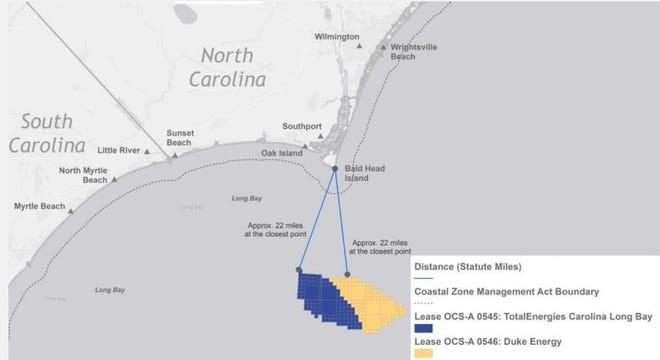 With an eye out for whales, survey work starts on offshore wind farms south of Wilmington
With an eye out for whales, survey work starts on offshore wind farms south of Wilmington
Researchers are collecting data for the best place to moor buoys that will measure wind speeds and monitor environmental conditions, including the presence of marine life
There are still plenty of hurdles to overcome, including lots of federal and state regulatory approvals, making sure the projects are economically viable, and securing customers for the power the giant turbines will produce. But a pair of offshore wind farms proposed about 22 miles south of Bald Head Island took a major step forward this month with the first survey work for the projects. Sailing from Southport, a research vessel owned by Geodynamics spent recent days mapping the seafloor to help identify the best locations for the placement of scientific buoys. The surveys will be used to find mooring areas for three buoys that will be the least environmentally intrusive while also allowing the collection of data to help direct the subsequent development of the offshore turbines that will rise more than 500 feet from the ocean’s surface. The buoys also will be equipped with sensors to detect marine life, including birds. TotalEnergies Renewables USA and Cinergy Corp., a non-regulated subsidiary of Duke Energy, spent a combined $315 million to lease nearly 140 miles of ocean from the federal government for the pair of huge wind farms. Once fully up and running, probably in the early 2030s, the wind farms could produce enough power to supply 750,000 homes. With the two wind farms adjacent to each other, the companies have decided to work together to help limit costs and take advantage of economies of scale. But first the companies have to determine where to place the giant windmills. “This is just initial information data gathering,” said Elizabeth Bennett, spokesperson for TotalEnergies, adding that the buoys will likely be deployed next year. “And while these projects are still in their very early stages, we see this as an opportunity for the Carolinas to take advantage of the millions of dollars in investments these projects can bring.”
Watching out for whales
Offshore wind is seen by clean energy advocates as a key component in helping governments de-carbonize their energy grids by reducing their reliance on dirty, greenhouse gas-spewing power sources like coal and natural gas. That includes North Carolina, which has a stated goal of reducing its 2005 level of carbon emissions by 70% by 2030. Offshore wind farms, however, have their critics. The projects are very capital intensive to build, although those costs drop dramatically once the turbines are up and running. Some coastal residents are also concerned that the giant windmills will damage their ocean “viewscapes,” and local officials fear the visual pollution also could harm the region’s vital tourism industry. Industry officials say the giant wind turbines will be next to invisible on the horizon. But perhaps the biggest concerns surround the wind farms potential impact on marine life, particularly the highly endangered North Atlantic right whale that migrates through North Carolina’s near-shore waters. A recent report by the National Oceanic and Atmospheric Administration (NOAA) estimated only 338 whales remain, a decrease from the 2021 estimate of 368 individuals. Ship strikes and entanglements with fishing gear are the top dangers for the highly endangered animals. Bennett said to help limit interactions with marine life the R/V Shackelford, the survey vessel, had a dedicated observer on board. It also voluntarily operated at a maximum speed of 10 knots to allow maximum time for proactive measures if a whale or other marine mammal was spotted. In addition, no equipment was used during the survey work that had sound frequencies harmful to marine life. The Natural Resources Defense Council (NRDC) has praised the companies for the protective measures they’ve put into place to limit interactions with the right whales.
Balancing cost with economic benefits
The pair of wind farms planned for Long Bay south of Brunswick County will join another offshore wind farm planned for roughly 27 miles off Kitty Hawk on the Outer Banks. While North Carolina has space and the wind resources for more offshore facilities, that idea appears cloudy right now. The U.S. Bureau of Ocean Energy Management (BOEM) this month rejected proposals for two new wind farm sites off the Outer Banks due to concerns raised by the Pentagon that the wind farms could interfere with military aviation training. Governor Roy Cooper, a big proponent of renewable energy, called the decision “extremely disappointing.” In 2021, Cooper signed an executive order that doubled down on the state’s commitment to offshore wind power, with goals of 2.8 gigawatts (GW) off the North Carolina coast by 2030 and 8 GW by 2040 − enough to power roughly 2.3 million homes. But a bigger speed bump to more offshore wind could be the state’s carbon-reduction plan, a roadmap on how the state’s will reach its aggressive goals to reduce emissions and reach a carbon-neutral energy sector by 2050. Although the plan has to be approved by the N.C. Utilities Commission, it is Duke Energy that largely lays out the way forward as the largest utility in the state. In the latest version of its plan, which is reviewed every two years, the utility’s favored proposal retains an option for adding up to 1.6 GW of offshore wind by 2035. Katharine Kollins, president of the Southeastern Wind Coalition, a nonprofit that advocates for wind energy development in the Southeastern U.S., thinks the company should be looking to do more. “It made a case for offshore wind, but not as strongly as we’d like to see,” she said of Duke’s plan. While offshore wind’s upfront capital costs can be substantial, Kollins said so are the potential economic development benefits for North Carolina of tapping into a largely undeveloped business sector that holds huge potential to grow as more and more states turn to offshore wind to meet their carbon-reduction goals. Without taking into account those economic benefits, you only have the carbon-reduction benefits from a power sector that’s still immature and expensive when compared to solar and other renewables and will likely stay that way for years to come. “Yes, there are significant capital expenses right now,” Kollins said. “But offshore wind comes with benefits that we’re not going to get with anything else.”
Read more » click here
Previously reported – September 2024
Why development of Brunswick County’s offshore wind farms has largely moved onshore
Duke Energy has included offshore wind in its latest plan to reduce carbon emissions. Now state regulators are reviewing the proposal
The wind hasn’t stopped blowing, and the waters just off the Brunswick County coast are as prime a spot for an offshore wind farm as they always have been. But after a flurry of announcements and activity in previous years, including offshore survey work last summer, things have been largely quiet on the ground and in the waters roughly 22 miles south of Bald Head Island. That’s not the case in Raleigh, though − and that’s largely where the future of the Brunswick wind farms will be decided. “Industry is waiting to hear if the N.C. Utilities Commission is going to green light offshore wind as part of the state’s electricity mix in the coming years,” said Katharine Kollins, president of the Southeastern Wind Coalition, a nonprofit that advocates for wind energy development in the Southeastern U.S. “It’s hard for them to consider spending huge sums of money on these projects if they don’t have some guarantees and cost certainty.”
Pros and cons
Offshore wind is seen by clean energy advocates as a key component in helping governments de-carbonize their energy grids by reducing their reliance on dirty, greenhouse gas-spewing power sources like coal and natural gas. That includes North Carolina, which has a stated goal of reducing its 2005 level of carbon emissions by 70% by 2030 − although Duke Energy would like to see that goal pushed back to 2035 − and becoming carbon-neutral by 2050. In 2022, TotalEnergies Renewables USA and a Duke Energy subsidiary paid the federal government a combined $315 million to lease nearly 140 miles of ocean off Brunswick County for a pair of huge wind farms. If fully developed, which would occur sometime in the early 2030s, the wind farms could produce enough power to supply 750,000 homes. The pair of wind farms proposed for Long Bay will join another offshore wind farm planned for waters roughly 27 miles off Kitty Hawk on the Outer Banks. That project is farther along than the Southeastern N.C. wind projects. While embraced by clean energy advocates, offshore wind farms have their critics. The projects are very capital intensive to build, although those costs drop dramatically once the turbines are up and running. Some coastal residents are also concerned that the giant windmills will damage their ocean “viewscapes,” although officials have said the Brunswick turbines will be next to invisible from the county’s south-facing beaches. Concerns also have been raised about the offshore turbines impacts on marine life, specifically marine mammals like the highly endangered North Atlantic right whale.
Offshore wind moves center stage
As the state’s largest utility, Duke is largely driving the train on what sort of mix of power production sources will be needed to meet the state’s carbon-reduction goals in the electricity sector while also keeping the lights on at an affordable price for consumers. In 2021, Cooper signed an executive order that doubled down on the state’s commitment to offshore wind power, with goals of 2.8 gigawatts (GW) off the North Carolina coast by 2030 and 8 GW by 2040 − enough to power roughly 2.3 million homes. But Duke’s initial Carolinas Resource Plan, basically a road map on how the utility proposed to reduce its future carbon emissions in both Carolinas, only had offshore wind as an option to meet future power needs. That changed in January, however, when the utility, citing a projected surge in future electricity demand, proposed moving forward with plans to add 2.4 GW of offshore wind to its grid in the 2030s as part of its updated carbon plan. That plan, which environmentalists and clean energy advocates are contesting as still being too reliant on old energy sources like natural gas plants instead of focusing on renewables like wind and solar, is now being reviewed by the utilities commission. Duke spokesperson Bill Norton said the utility has asked regulators to allow it to gather additional information to make sure integrating power produced by offshore wind farms into the company’s power grid is financially viable. That work would include pricing information, an issue that derailed several other proposed offshore wind projects after companies decided they couldn’t build and operate the wind farms at the contracted price utilities had agreed to buy the power at. “TotalEnergies looks forward to the (utilities commission) order in December 2024 and additional approvals from N.C. and S.C. as necessary, which will inform the next steps for development activities in 2025,” said company spokesperson Elizabeth Bennett in an email.
‘Moving in a positive direction’
Offshore wind projects, while certainly green, have run into some rough financial waters in recent years. That stormy weather included efforts by companies to renegotiate their contracts with utilities due to rising construction costs, higher inflation and supply chain disruptions, surging interest rates, and the war in Ukraine. Those headwinds culminated in some wind developers in New York and New England deciding to walk away from projects rather than get stuck in money-losing endeavors. But Kollins said the offshore wind sector is rebounding, with several large farms in the Northeast now sending power onshore and some of the financial and supply chain issues that plagued earlier projects getting ironed out as the industry matures in the U.S. “There are a lot of good things happening for offshore wind now,” she said. “Certainly, challenges for the industry remain, but I think it’s definitely moving in a positive direction.”
Read more » click here
Previously reported – October 2024
 11 things to know about offshore wind farms in North Carolina and the United States
11 things to know about offshore wind farms in North Carolina and the United States
There are currently three offshore wind farms proposed for the N.C. coast, including two off Brunswick County.
After a few industry hiccups, the proverbial winds seems to be blowing back in the right direction for offshore wind projects that the Biden administration and many states, including North Carolina, are relying on to help them tackle carbon emissions from their power sectors.
Among the offshore wind projects on the drawing board are three wind farms off the coast of North Carolina, including a pair roughly 20 miles south of Bald Head Island in Brunswick County.
Here are 11 facts and tidbits to know about the Brunswick projects and offshore wind farms in general.
- In 2022, TotalEnergies Renewables USA and a Duke Energy subsidiary paid the federal government a combined $315 million to lease nearly 140 miles of ocean off Brunswick County for a pair of huge wind farms. The projects are currently in the very early stages of planning and survey work.
- If the Brunswick wind farms are fully developed, which would occur sometime in the early 2030s, the projects could produce nearly 2.4 GW of power, enough to supply 750,000 homes.
- In 2021, Gov. Roy Cooper signed an executive order that doubled down on the state’s commitment to offshore wind power, with goals of 2.8 GW off the N.C. coast by 2030 and 8 GW by 2040 − enough to power roughly 2.3 million homes.
- The latest version of Duke Energy’s Carolinas Resource Plans, which includes carbon-reduction proposals for both North and South Carolina, includes plans to add 2.4 GW of offshore wind to its grid by 2035. The N.C. Utilities Commission is currently reviewing Duke’s proposed plan, with a decision expected by the end of the year.
- According to the National Renewable Energy Lab (NREL), Virginia, North Carolina, South Carolina, and Georgia have 82% of the East Coast offshore wind resource in shallow water and 45% of the total East Coast offshore wind resource.
- Currently the largest offshore wind farm under construction in the U.S. is being built by Dominion Energy 27 miles off the coast of Virginia. The project, which should be finished in about two years, is expected to generate 2.6 GW from 176 turbines.
- Offshore wind turbines are getting taller and taller. According to the U.S. Department of Energy, the average height of the hub − where the large, spinning blades are attached to the monopole − was about 330 feet in 2016. That is expected to increase to 500 feet, the height of the Washington Monument, by 2035. Add the height of the blades at their apex, and that increases to more than 800 feet.
- North Carolina is eager to capitalize on the economic opportunities offered by the growing offshore wind market. Efforts include the formation of the N.C. Taskforce for Offshore Wind Economic Resource Strategies (NC TOWERS).
- A 12-turbine wind farm off the Hamptons on New York’s Long Island became the first U.S. offshore wind project to provide power onshore when it was connected to the grid in December 2023.
- Despite significant federal incentives and strong political support, offshore wind has had a rough few years. Issues that have arisen include post-pandemic inflation spikes, rising interest rates, supply chain bottlenecks, and worries from coastal residents that huge turbines would ruin their “viewscapes.” Some Republicans and environmentalists also have raised concerns about the wind farms’ impacts on marine life, particularly whales.
- Compared to other countries around the world, the U.S. is a laggard in harnessing the energy potential of offshore winds. The top five countries, in descending order, generating electricity from offshore wind farms are China, the United Kingdom, Germany, the Netherlands, and Denmark.
Read more » click here
Previously reported – November 2024
Update provided on offshore wind off Brunswick County coast
During the Oct. 23 Brunswick County Shoreline Protection Consortium meeting, representatives from one of the offshore wind lease holders for the Carolina Long Bay Wind Energy Area, located off the Brunswick County coast, provided an update on the project, while local officials and stakeholders pushed back on the plans. TotalEnergies, a French multinational energy and petroleum company, and Cinergy Corporation, a direct non-regulated Duke Energy subsidiary, won the May 2022 auction for lease of the 86 square nautical mile Carolina Long Bay Wind Energy Area (WEA), with TotalEnergies leasing 54,937 acres and Cinergy Corporation leasing 55,154 acres. If developed, the WEA could generate at least 1.3 gigawatts of offshore wind energy, enough to power nearly 500,000 homes. The Carolina Long Bay area encompasses much of the Brunswick County coast and extends into South Carolina past Myrtle Beach. The wind turbines will be located at least 22 miles from Bald Head Island’s shores and eight miles west of Frying Pan Tower, representatives confirmed during last month’s meeting. The turbines would be less visible as one moves further south down the county’s coast. The Brunswick County Board of Commissioners in 2021 adopted a resolution opposing offshore wind turbines sited fewer than 24 nautical miles from the shoreline. Several Brunswick County municipalities have adopted similar resolutions. During the Oct. 23 meeting, Representative Frank Iler asked if the turbines would be visible from shore. In response, Susan Munroe, TotalEnergies community engagement manager, said the turbines would be “minimally visible.” “The closer we get to development, we’re going to do some visualizations,” she said. “It’s going to be minimally visible depending on the time of day, depending on where you are.” Albie Solana, TotalEnergies’ fisheries liaison, noted the moisture in the air during the summertime in Brunswick County will further reduce visibility. Regarding a timeline for development and construction of offshore wind turbines there is still a “long, long, long way to go,” according to Munroe. Munroe explained that the North Carolina Utilities Commission (NCUC) will release its next order of the state’s carbon plan, originally adopted in 2022. The plan is a result of the ratification of House Bill 951 in 2021, which requires the NC Utilities Commission (NCUC) to take “all reasonable steps” to achieve 70% carbon emissions reductions from 2005 levels by 2030 and achieve carbon neutrality by 2050. “The [NC] Utilities Commission will release their next order of the carbon plan December of 2024,” she said, “and for us, for the project what that means is that they will provide some sort of direction.” Although TotalEnegeries or Duke Energy are not currently privy to what the updated order will call for, Munroe said the next major action on the Carolina Long Bay project would be installation of data collection buoys in the lease area. The Carolina Long Bay WEA was surveyed in 2023 to find “suitable” locations for the deployment of three data-collection buoys, The Brunswick Beacon reported. If approval for the buoys is granted, two will be used to collect meteorological data and one will be used to collect environmental data, namely for wildlife monitoring. Data will be collected over a one- to two-year period. Following the TotalEnergies presentation, local leaders pushed back on the plans for offshore wind development off the county’s coast, asking about the benefits the project will bring to Brunswick County, the municipalities and citizens versus the impacts. Brunswick County Commissioner Marty Cooke said the Carolina Lay Bay project is “being forced down our throats” by the Bureau of Ocean Energy Management (BOEM), North Carolina Governor Roy Cooper and the former Obama Administration, noting the county is not in favor of offshore wind development off its shores. “We don’t want these things anywhere near us, and if you’re going to have a 300-foot tall tower out there that’s 22 miles out or whatever, we’re going to see them,” Cooke said. Oak Island Mayor Elizabeth White pressed TotalEnergies representatives on how towns and citizens within the turbines’ viewshed will benefit from the project. “The benefits, I’m not hearing them being articulated — it’s all very vague at this point. … It’s hard to support something when we don’t know what it is we’re supporting other than visually offshore, but I can’t go back to my community and as the mayor say, ‘This is how our community will benefit from this project.’ We’ll pay the price for years,” White said. North Carolina For-Hire Captain Association Officer Cane Faircloth echoed Cooke’s sentiment, noting the organization, based on its independent research, feels the offshore wind industry is not being truthful and transparent about the effects of offshore wind projects. Munroe, in response to these comments, said they hear the various concerns “loud and clear” and will work to address them as the project moves forward. “We are so early in the process and I’m grateful for that,” she said. “We have a lot to learn. We have a lot of time to listen to concerns and learn.”
Read more » click here
Previously reported – January 2025
Ports, suppliers in 40 states are invested in offshore wind
The nation’s burgeoning offshore wind energy industry has created thousands of jobs, boosted work in shipyards and ports, and includes a supply chain that spans 40 states, according to a new report. Billions of dollars have been invested in things like new and retrofitted vessels for offshore wind developers, ports infrastructure, and the expansion of renewable energy manufacturing facilities that support offshore wind, according to Oceantic Network, a Baltimore-based nonprofit that advocates growing the country’s offshore renewable energy industry and supply chain. According to the report, “Offshore Energy at Work,” 25 U.S. ports are either taking part in the industry or preparing to support it. Last February, North Carolina State Ports Authority Executive Director Brian Clark signed a record of decision on a proposed plan to create a multi-use terminal that would support manufacturing and operations for offshore wind and automotive industries at the Morehead City port. The proposed project entails developing land the port owns on Radio Island. It includes construction of a 300,000-square-foot manufacturing facility with office space for offshore wind, a roughly 60-acre gravel pad for storage, a new rail spur that would tie into the existing rail, roadway improvements, and the installation of a gas line from Morehead City to the island. The estimated price tag is $250 million to $285 million. “We have no updates to provide at this time,” Elly Cosgrove, N.C. Ports senior communications manager, said in an email Wednesday. “The Record of Decision signed in February is the latest as it pertains to Radio Island.” It is unclear how an executive order President Donald Trump signed in his first day back in the White House pumping the brakes on new offshore wind development might affect the ports’ proposed plans, including four lease areas off the North Carolina coast. Five days after Oceantic Network released its 60-page report, Trump suspended new leases on the entire outer continental shelf. The order will stand until it is revoked. The order also blocks the federal government from issuing new federal permits to offshore and onshore wind projects, including four lease areas off the North Carolina coast, until the secretary of Interior conducts a “comprehensive assessment and review” of the permitting process. Oceantic Network joined other renewable energy proponents in immediately rebuking the president’s order, calling the permitting pause “a blow to the American offshore wind industry.” Trump’s actions threaten thousands of American offshore wind industry-related jobs in shipyards, factories, and ports, and “strand businesses who have reorganized their operations to support the sector,” Oceantic said in a release. “While under a National Energy Emergency created by an unprecedented rise in energy demand, we should be working to quickly bring generation online instead of curtailing a power source capable of providing base load generation and creating new jobs across 40 states,” Oceantic founder and CEO Liz Burdock said in the release. “We urge the administration to reverse this sweeping action and keep America working in offshore energy as part of its commitment to an ‘all-of-the-above’ energy strategy.” A spokesperson for Oceantic Network declined to comment further. In a statement it released following Trump’s order, the Southeastern Wind Coalition called offshore wind “an economic force” in the U.S., investing billions of dollars in reviving previously underutilized ports and creating training programs for the work sector. “Wind energy is critical to achieving American energy dominance, meeting our growing electricity demand, and creating stable manufacturing jobs across the nation,” Southeastern Wind Coalition President Katharine Kollins said in a release. “Wind energy is a vital part of the global electricity system, and ceding the advancement and development of wind technologies to other nations will only set us back.” More than 100 companies in the Southeast produce components for the industry, according to the wind coalition. But at least one of those has turned to the European market to stay afloat. An official with Nexans, a France-based power and communications cable producer, said in an article published earlier this month that the company’s Charleston, South Carolina, plant — the largest subsea cable manufacturer in the U.S. — is shipping its product to Europe. Nexans vice president for generation and transmission told renewable energy publication Recharge that high demand for cables in Europe is “a blessing in disguise” for the plant. Still, all is not all doom-and-gloom for the industry. In an email announcing the dates and location for the International Partnering Forum, the largest offshore wind energy conference in the U.S., Burdock noted that five commercial-scale, federally approved offshore projects are either under or near construction. Another six projects have received federal approvals. “Despite misleading headlines, there is no question that the industry is moving forward,” Burdock wrote.
Read more » click here
Previously reported – February 2025
As NC wind energy projects advance, uncertainty rules
Wind projects that are leased, permitted or under construction in or near North Carolina are likely to survive buffeting by renewed wind energy skepticism from the Trump administration. Shortly after taking office in January, President Donald Trump issued an executive order barring new offshore wind leases and requiring reviews of existing and permitted wind projects. Although it was not targeting existing leases, industry supporters have questions about what rules, permits or projects it could impact and the potential for broader impacts through the workforce and manufacturing industries. “It’s not that companies are moving on as business as usual, but there’s so much uncertainty that they can’t just come to a screeching halt, and then all of this could change in five minutes,” Karly Lohan, Southeastern Wind Coalition’s senior Carolinas program manager, recently said in an interview with Coastal Review. “They have to keep going and figure this out as they go. And realistically, we’re probably not going to know an answer to a lot of those questions, and the true implications of this offshore wind executive action until … we know.” Lohan noted that the nonprofit coalition she represents is focused on educational outreach about wind energy and does not speak or act as a trade organization for the industry. A wind project off Kitty Hawk along the Outer Banks that’s owned by Avangrid Renewables and Dominion Energy is not yet under construction, but it still has active leases. Dominion Energy’s $9.8 billion Coastal Virginia Offshore Wind, or CVOW, project off Virginia Beach is going full speed ahead. The 2.6-gigawatt project is currently about half done and is expected to be completed on schedule by the end of 2026, according to company spokesman Jeremy Slayton. Duke Energy, along with Total Energies, has leased an offshore area off Southport for a wind farm known as Carolina Long Bay project, but it is in very early permitting stages. “We are still easily at least six or seven years away from construction for any of those projects,” Lohan said. The two land-based wind energy projects in North Carolina — Amazon Wind U.S. East in Elizabeth City, completed in 2017, and Timbermill Wind in Chowan County, completed in 2024 — will not be affected by the orders, Lohan said. Duke Energy has expressed interest in future land-based projects in North Carolina, but no information has been released about potential locations or plans, she said. While Dominion is working to complete its Virginia Beach project, it is keeping its CVOW-South, formerly the Kitty Hawk North project, on hold for the time being, Slayton, the company’s spokesman, said. “CVOW-South provides us with a potential option for additional offshore wind development,” he said in an email. “Our most recent long-term planning document, the Integrated Resource Plan, forecasts this project, if we pursue it, for the mid-2030s. At this time, we do not have a firm timeline or cost for developing this lease area.” Dominion Energy came to an agreement in July 2024 to purchase one-third of the Kitty Hawk North project, which is about 27 miles east of Corolla, the northern end of the Outer Banks, and about 38 miles southeast of the Sandbridge community in Virginia Beach. “Avangrid was willing to sell a portion of the project at a reasonable cost,” Slayton told Coastal Review at the time. “And we believe it was prudent to take advantage of this opportunity to meet the growing needs of our customers with clean energy and also help us achieve the requirements of the Virginia clean Economy Act, which calls for up to 5.2 gigawatts of offshore wind.” If developed, the project will connect to the grid for CVOW-South at a new substation at Corporate Landing in Virginia Beach, near Naval Air Station Oceana, he said. Katharine Kollins, president of Southeastern Wind Coalition, a nonprofit advocacy group, said that wind power production in the U.S. is behind the mature development of both offshore and onshore wind in Europe, but it has the capacity and resources to build a robust wind energy industry. “It requires economies of scale in manufacturing, all of the components it requires, economies of scale in construction and development and even in operations and maintenance,” she told Coastal Review recently. “And so, what the manufacturers have been saying to advocates in the industry for years is, ‘We need a solid pipeline of projects before we can commit a billion dollars to building a manufacturing facility in the U.S. that can then produce the major components, or an offshore wind turbine that would include your towers, your blades.’ Right now, I think the only thing that we can manufacture in the U.S. is foundations.” Like any energy production, wind energy is an equation of risk versus benefits, she said. And wind is economical, clean and safe, she added. “You don’t hear anything about wind spills,” she said. Yes, there are bird mortalities associated with strikes, but far, far less than the estimated one billion annual deaths from birds striking buildings. Kollins said the problem is uncertainty. “You know, uncertainty is not good for investment, and so if you have some significant political uncertainty, which makes it really hard for investors to move forward with any of those components that I was mentioning, whether in components, referencing manufacturing, referencing development, even thinking about leases. “Like, am I going to go pay $100 million to lease a square of ocean that, then I might have another presidential administration that says, ‘I don’t really like this?’ No thanks,” she said. “It does make it hard to overcome. This is an industry that should be nonpartisan.”
Read more » click here
Previously reported – February 2025
Trump’s decision to pause offshore wind farms creates stormy waters for NC projects
The president’s move has brought into question the political and financial viability of future offshore wind farms, including two large projects for near-shore waters off Brunswick County
They are expensive to build, just finding their footing on this side of the Atlantic and have faced backlash from parties as varied as beachfront property owners and fishermen to coastal businesses and fossil fuel backers. But the U.S.’s still-young offshore wind industry has recently run into its biggest challenge of all, and one that could seriously destabilize the entire industry − including here in North Carolina: President Donald Trump. “I’d say it’s in critical condition,” said Dr. Brian Murray, director of the Nicholas Institute for Energy, Environment and Sustainability at Duke University. Trump’s move announced on his first day in office to cancel all future leases for offshore wind farms and block the federal government from issuing new permits for existing projects has effectively taken the wind out of the sails of several projects that were in the exploratory and planning stages, including two off Brunswick County and one off Kitty Hawk on the Outer Banks. The president also has asked federal officials to see if they could claw back any permits issued for existing projects. Trump’s executive order doesn’t stop the handful of offshore wind projects, primarily in the Northeast, that are already under construction from moving forward. But because building offshore wind farms is incredibly capital intensive, which much of that money coming at the front-end of the massive projects, stopping any additional offshore wind projects severely limits companies and utilities from taking advantage of economies of scale. Murray said the president also has hinted that he could seek to end the tax credits for renewable energy projects included in President Joe Biden’s Inflation Reduction Act, which was one of the big financial incentives that made many of these billion-dollar wind projects financially attractive in the first place. “Now there’s a big question if those tax credits will even materialize,” he said. Katharine Kollins, president of the Southeastern Wind Coalition, a nonprofit that advocates for wind energy development in the Southeastern U.S., said all of this political and financial uncertainty has left the industry largely in limbo and wondering what the future of offshore wind is in the U.S.
Ceding another industry to China?
Trump said he was taking the step to all-but end future offshore wind farms, which he railed against during his campaign, because the U.S. is facing an “energy emergency.” But to clean energy supporters and environmentalists, the president’s actions don’t add up. “To most folks in the energy industry, you don’t declare an energy emergency and then ensure your country can’t access one of the largest and easiest ways to generate electricity,” Kollins said, noting that it also up ends the “all of the above” approach to having a diverse mix of energy sources in your power portfolio. Ending federal support for offshore wind could also cede another renewable energy business sector that most economists believe will offer huge growth opportunities in the coming decades as fossil fuels run out and become more politically unpalatable to foreign countries, particularly China. Already, the West has all but given up in competing in the solar panel market, with China dominating the industry, and the Chinese are making great leaps and strides in dominating the electric vehicle market as American and European automobile manufacturers dither. That’s not to say the offshore wind industry doesn’t already have a sizeable economic footprint in the U.S. According to the Oceantic Network, which promotes the offshore renewable energy industry and associated supply chain, there’s a $25 billion supply chain in 40 states and at more than two dozen ports that supports the industry. One business that has been looking to get into the wind field is the N.C. State Ports Authority, which last year floated a plan to build a multi-use terminal that would support the state’s offshore wind and automotive industries at its Morehead City port. “These initial actions by the president have been incredibly harmful for the industry,” she said.
‘Delays cause more problems’
With federal support for renewable energy sources looking shaky at best, it isn’t known what that might mean for states and had planned on integrating lots of offshore wind into their future energy grids as a way of increasing their clean energy footprint and reducing their greenhouse gas emissions, which is the primary driver of climate change. According to Oceantic, as of the start of 2025 there are six offshore wind projects in operation or under construction delivering 5 megawatts of power to the nation’s grid, with state demand for another 116 megawatts to meet future power demands and clean energy mandates. In North Carolina, the latest iteration of the Carolinas Resources Plan approved last fall by the N.C. Utilities Commission calls for including up to 2,400 megawatts of offshore wind in Duke Energy’s portfolio by 2035 if a study due later this year shows it is feasible to move forward. Two of North Carolina’s major wind projects are planned for the waters just south of Brunswick County, with initial development and evaluation of the projects − including potential impacts to marine life like the high endangered North Atlantic right whale − already started. One of the Brunswick sites is leased to one of Duke’s unregulated affiliates, while the other is leased to France’s TotalEnergies. “We are continuing to evaluate all the Presidential Executive Orders that came out in January, including the executive order on offshore wind,” said Duke spokesperson Bill Norton. “We look forward to working with the new administration on constructive outcomes to ensure reliable and affordable energy for our growing customer base.” Kollins said the industry already was facing some headwinds because of inflationary pressures and the need to rework or cancel existing contracts with utilities that didn’t make the offshore projects financially viable. Now with Trump’s actions, some companies are abandoning projects or completely exiting the U.S. market. That, in turn, leaves businesses that support the industry with fewer potential customers and projects and wondering if they’ll be able to weather the storm until the political winds hopefully change in a couple years. “There’s a negative feedback loop with the supply chain, unfortunately,” Kollins said. Duke’s Murray said the political and regulatory uncertainties have put a big chill on the offshore wind industry. “It was already a challenging industry in many respects,” he said. “But what’s happened now will cause delays, and delays cause more problems.”
Read more » click here
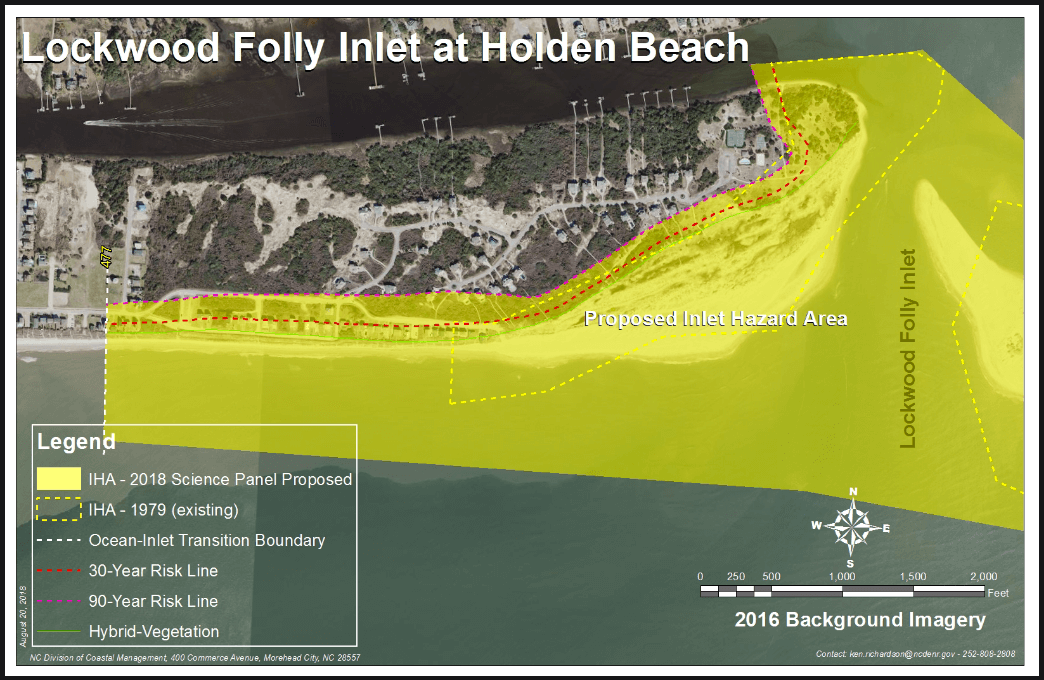

 The Holden Beach Property Owners Association (HBPOA) has been monitoring the proposed changes to the Inlet Hazard Area (IHA) boundaries on the east and west ends of our island. The proposed IHA will impact more than 200 property owners on the west end of our island by placing new restrictions on what they can build (or rebuild) on their property.
The Holden Beach Property Owners Association (HBPOA) has been monitoring the proposed changes to the Inlet Hazard Area (IHA) boundaries on the east and west ends of our island. The proposed IHA will impact more than 200 property owners on the west end of our island by placing new restrictions on what they can build (or rebuild) on their property.  The Holden Beach Property Owners Association (HBPOA) has been monitoring the proposed changes to the Inlet Hazard Area (IHA) boundaries on the east and west ends of our island. The proposed IHA will impact more than 200 property owners on the west end of our island by placing new restrictions on what they can build (or rebuild) on their property.
The Holden Beach Property Owners Association (HBPOA) has been monitoring the proposed changes to the Inlet Hazard Area (IHA) boundaries on the east and west ends of our island. The proposed IHA will impact more than 200 property owners on the west end of our island by placing new restrictions on what they can build (or rebuild) on their property. 
 .
.
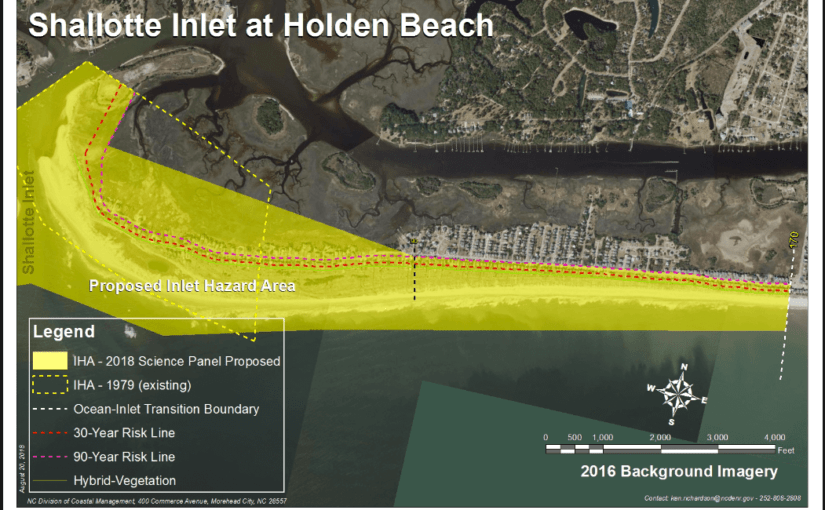

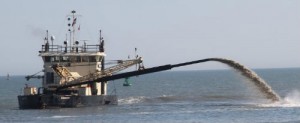
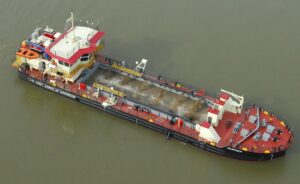
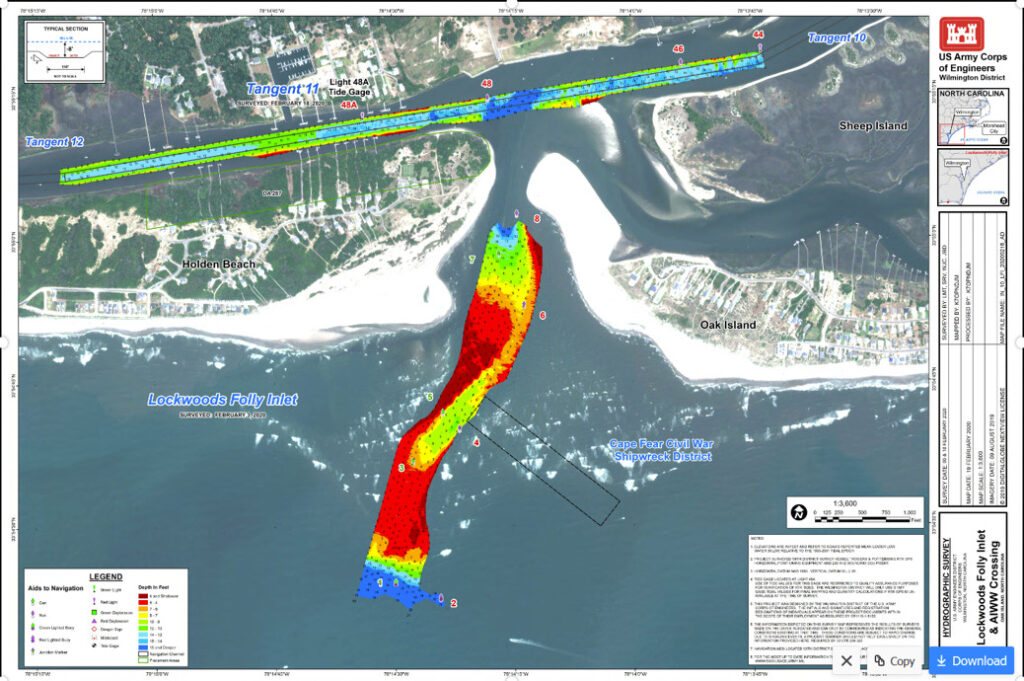
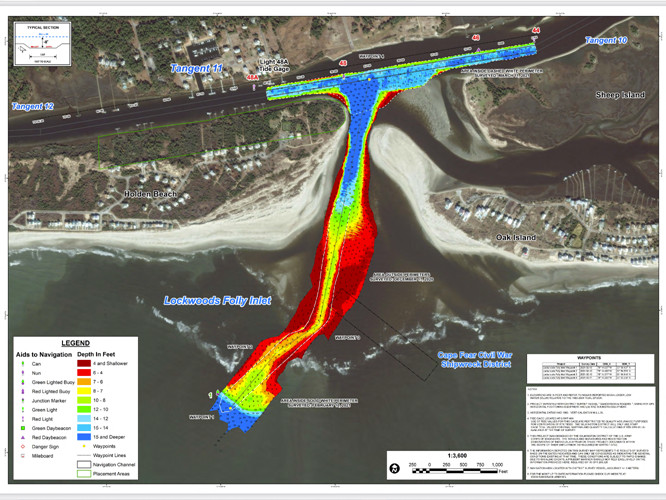 Lockwood Inlet Association warns boaters of broken pipe, other dangers in waterway
Lockwood Inlet Association warns boaters of broken pipe, other dangers in waterway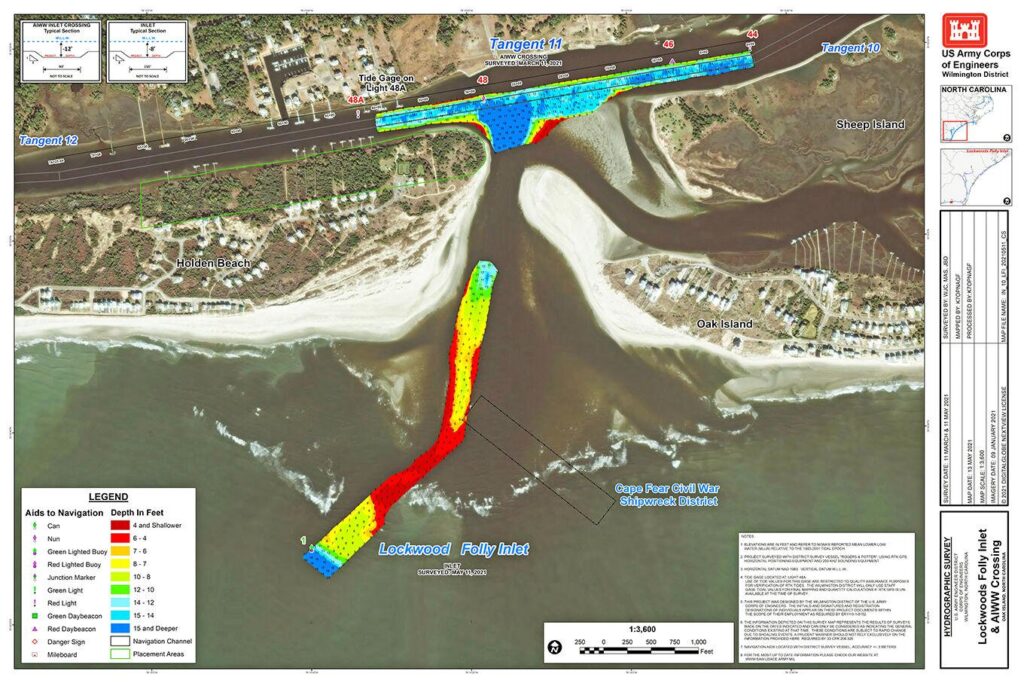
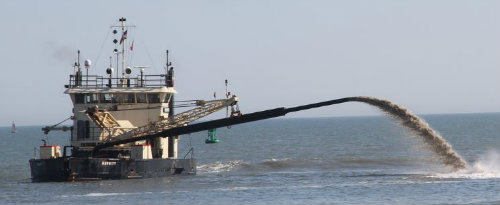 US Army Corps of Engineers set to complete dredging of dangerously shallow Brunswick County inlet
US Army Corps of Engineers set to complete dredging of dangerously shallow Brunswick County inlet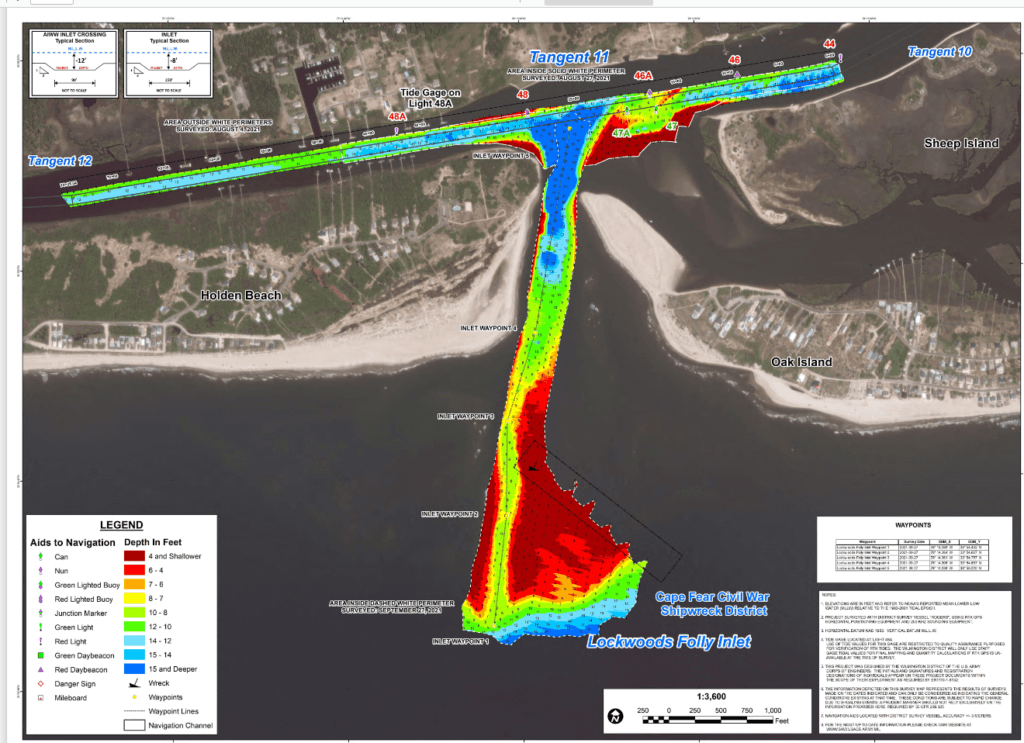


 NC Absent from Expanded Offshore Drilling Moratorium
NC Absent from Expanded Offshore Drilling Moratorium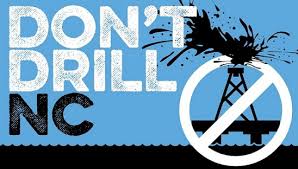
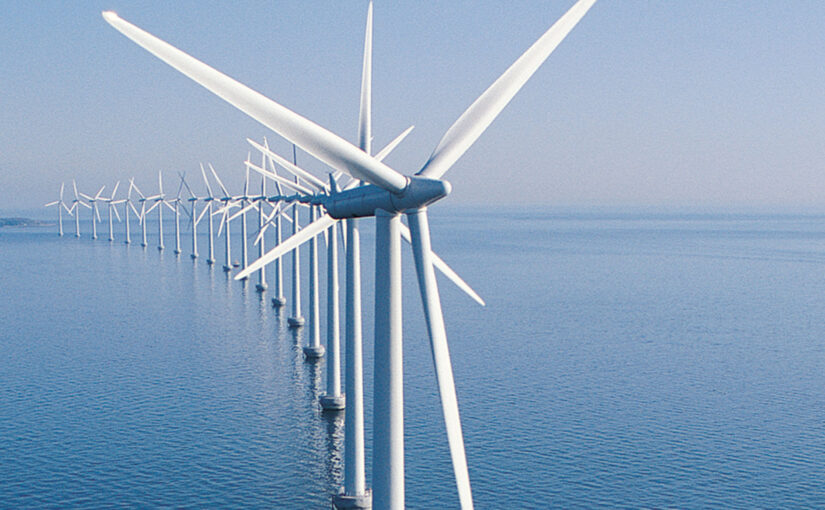


 Previously reported –
Previously reported – 


